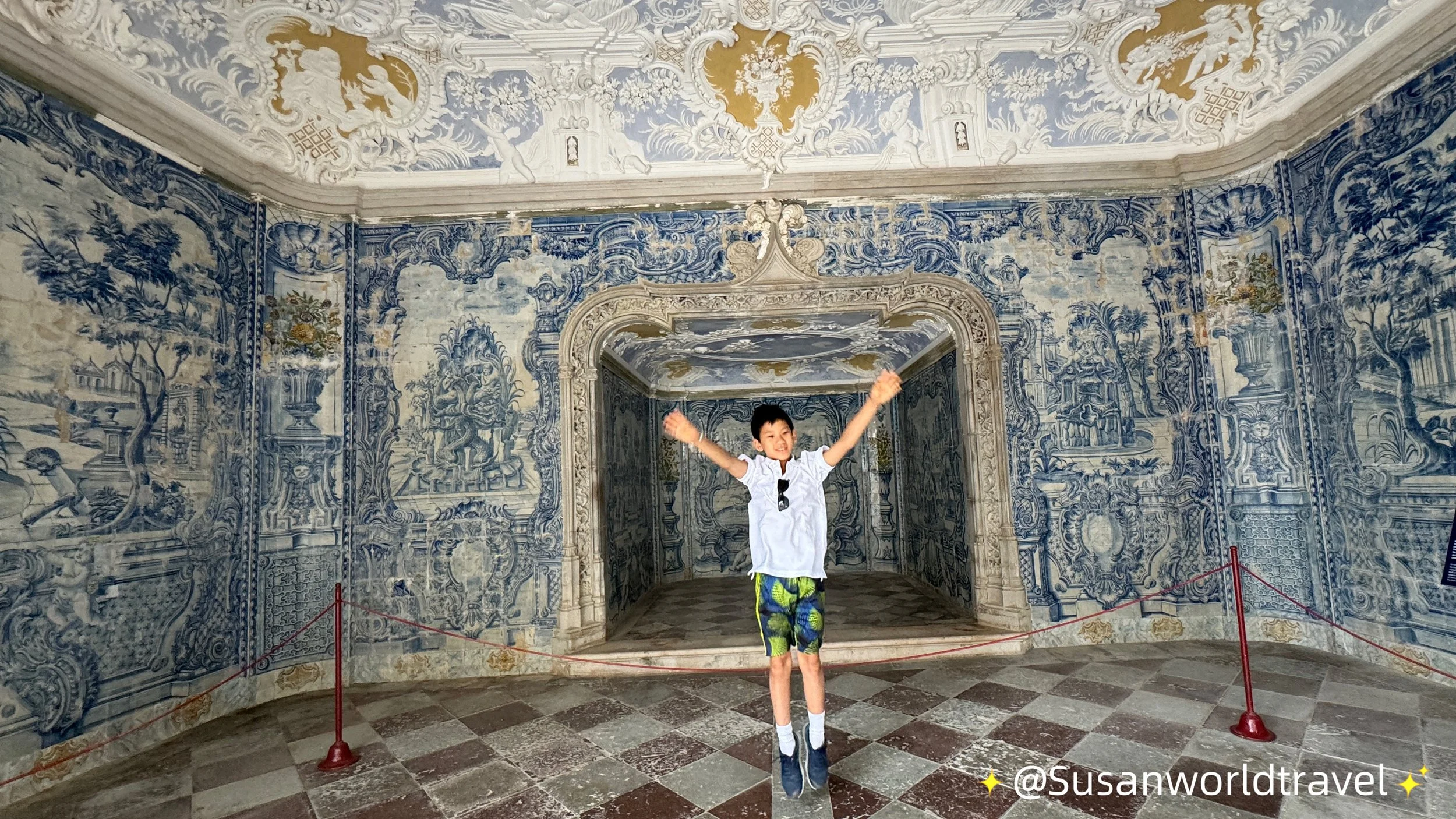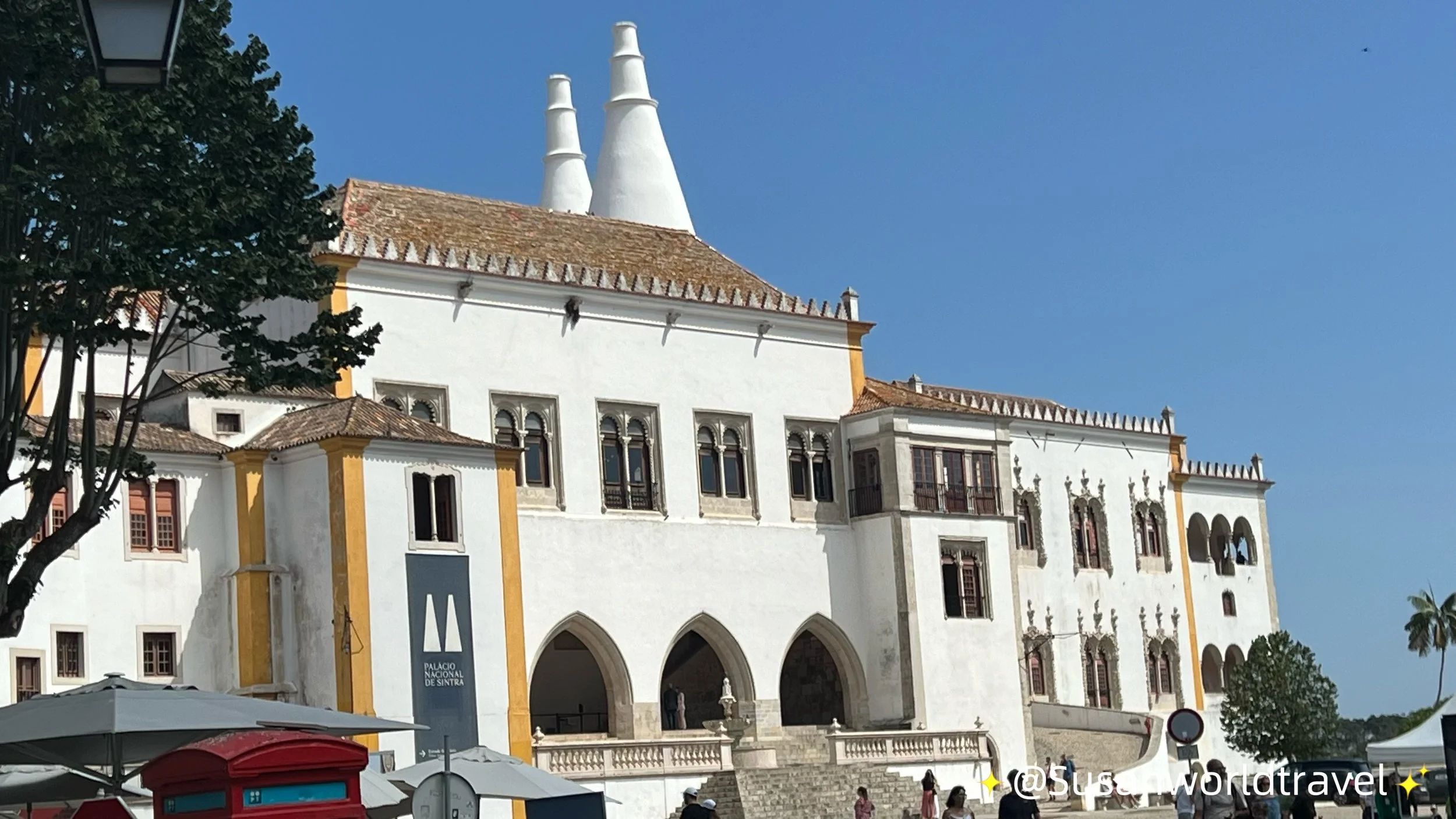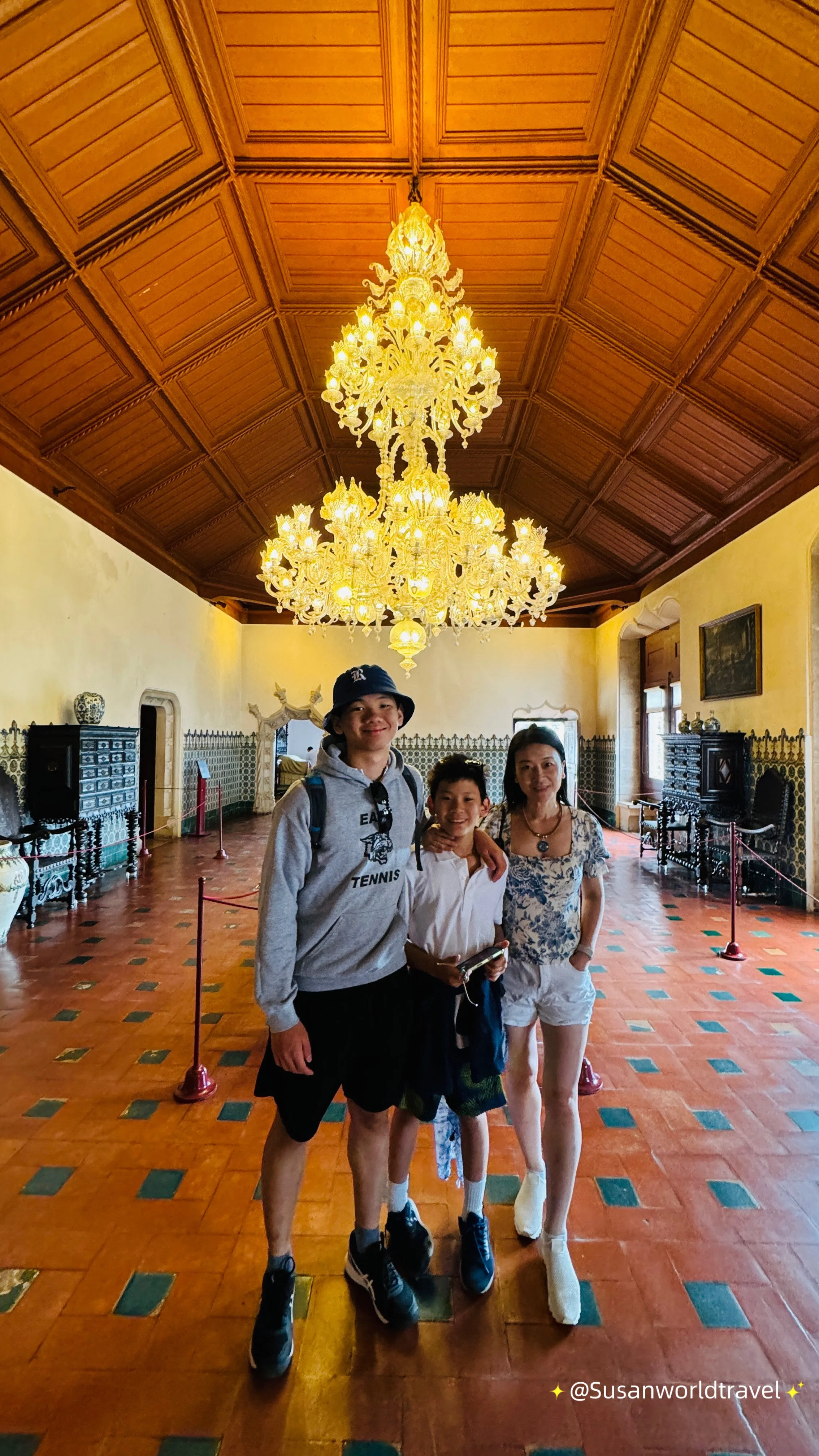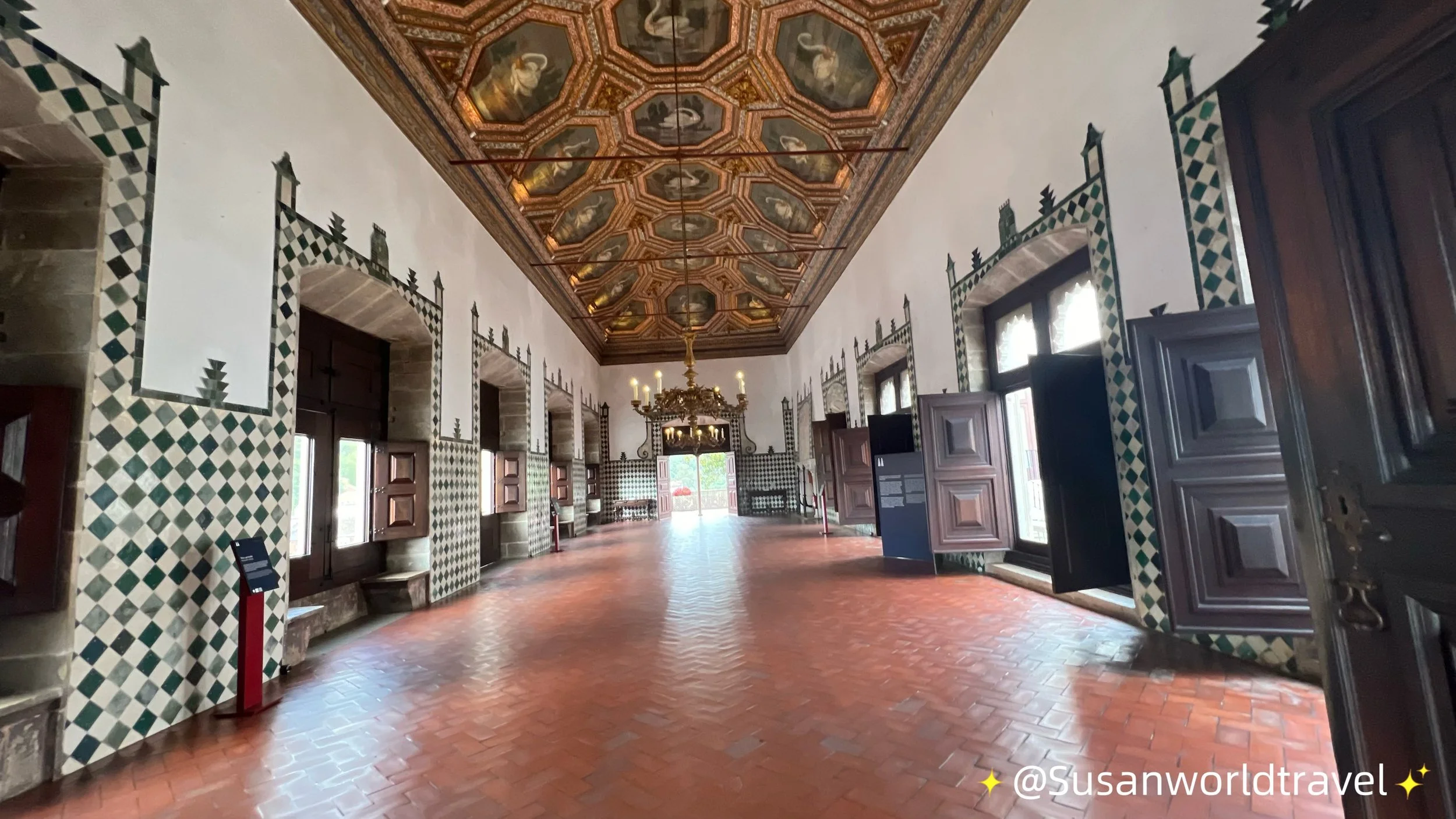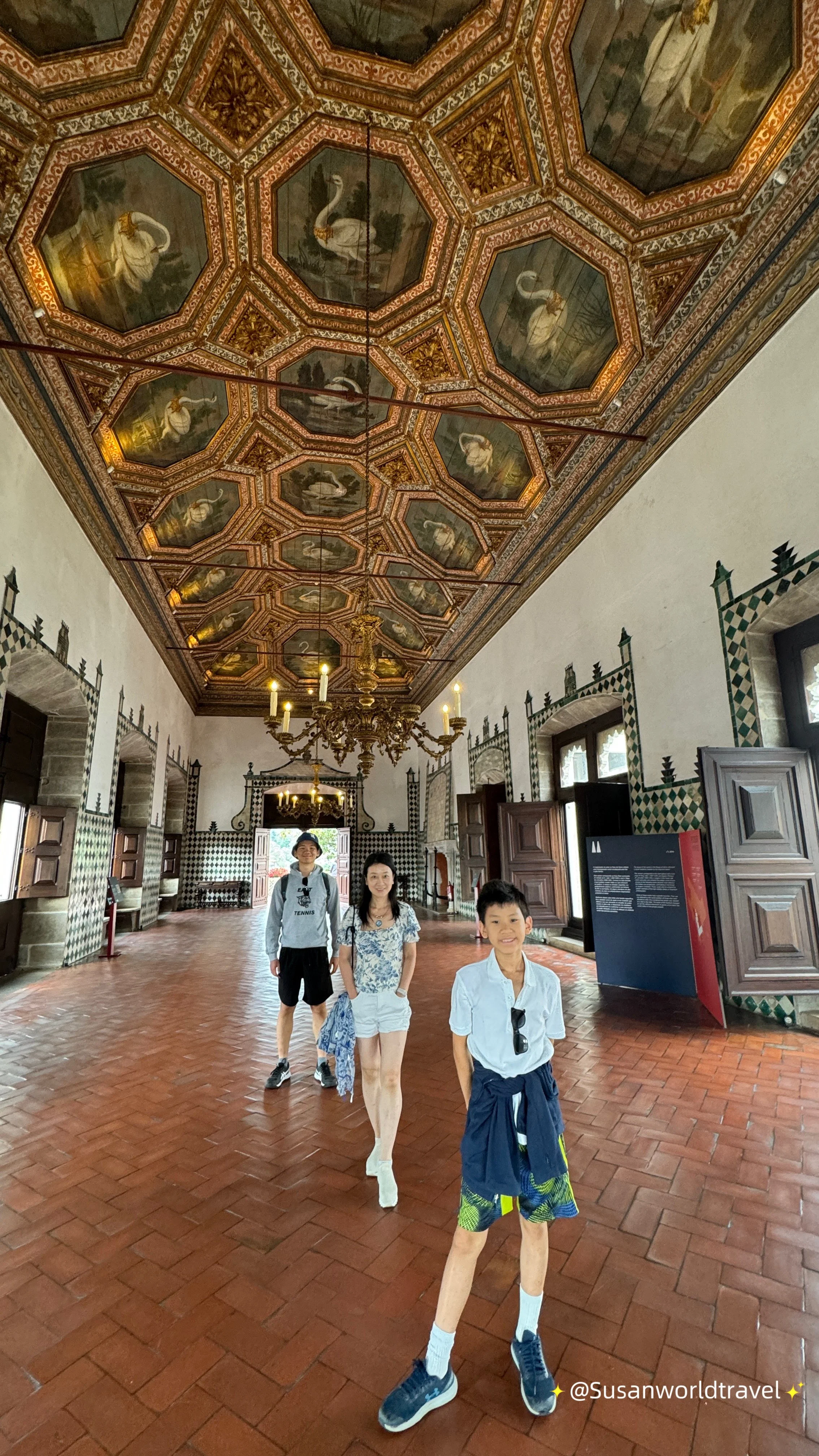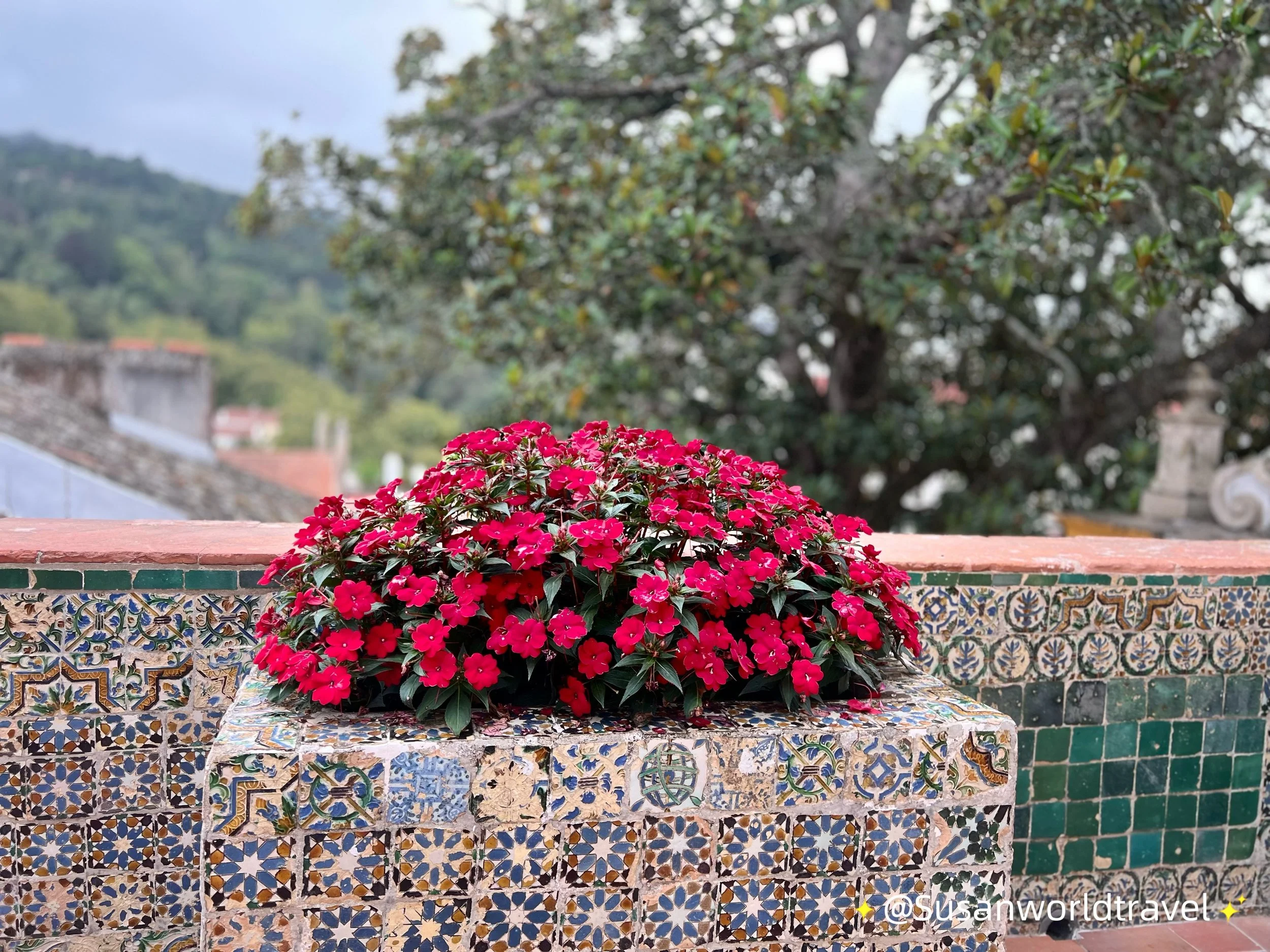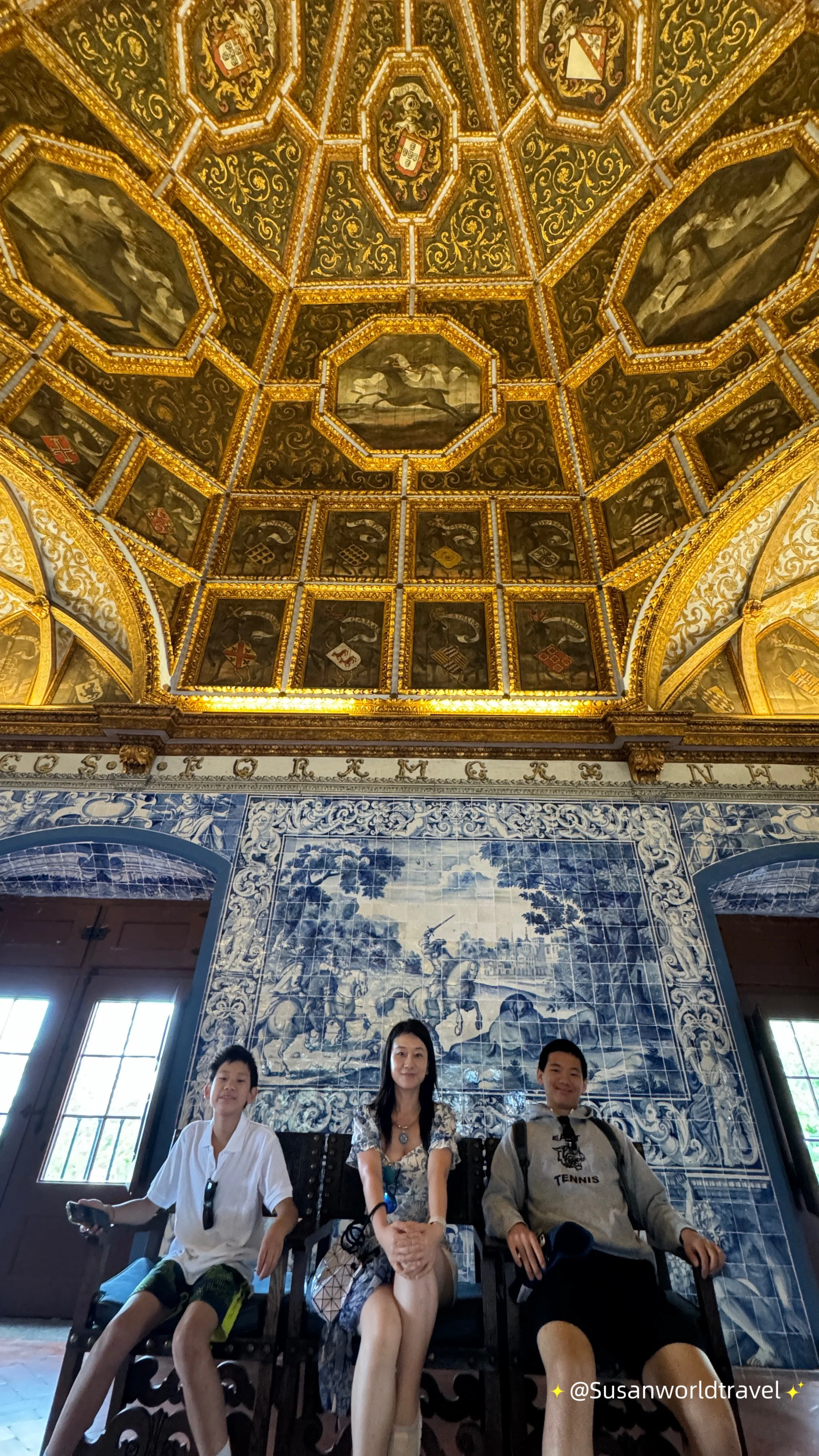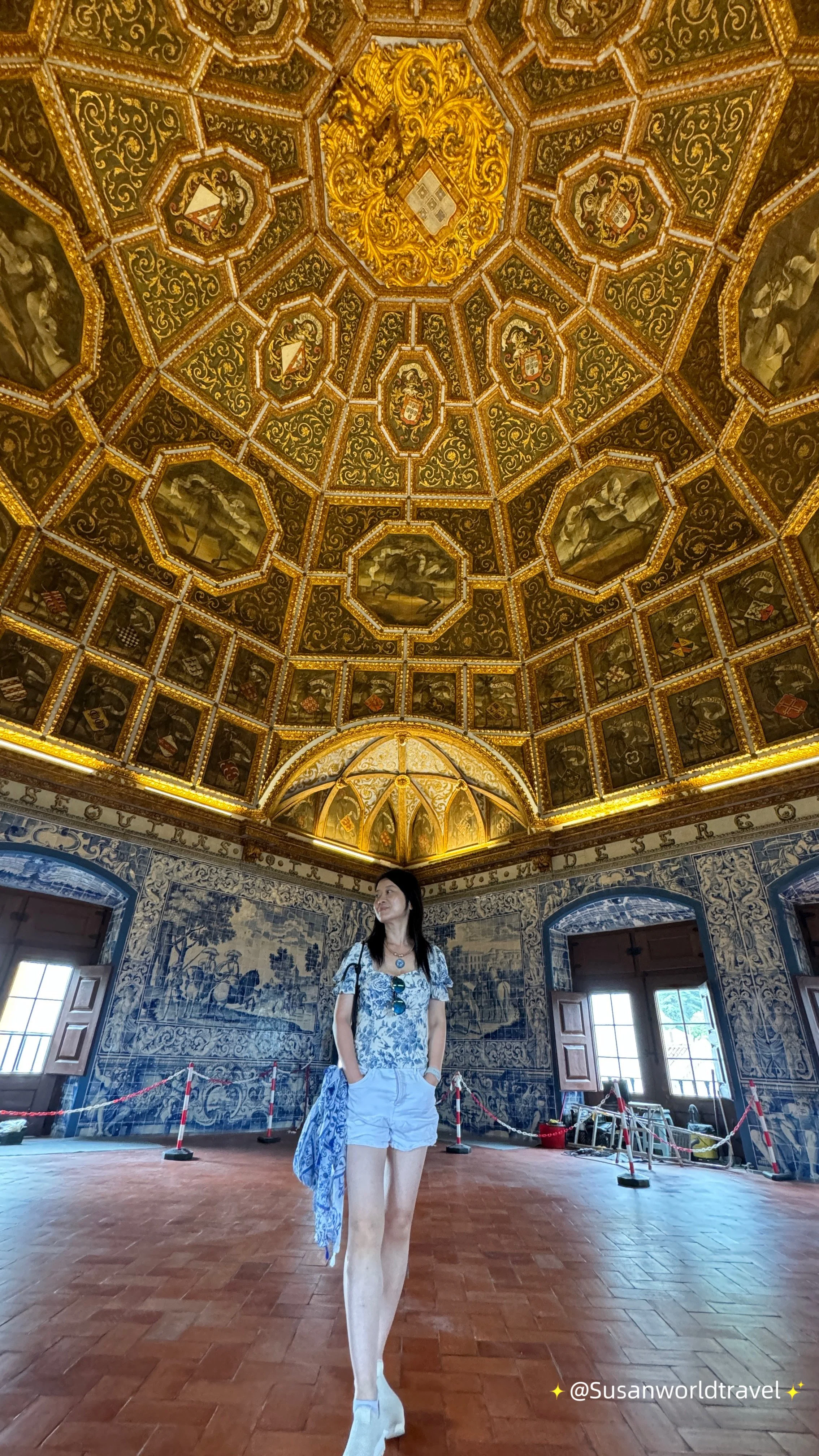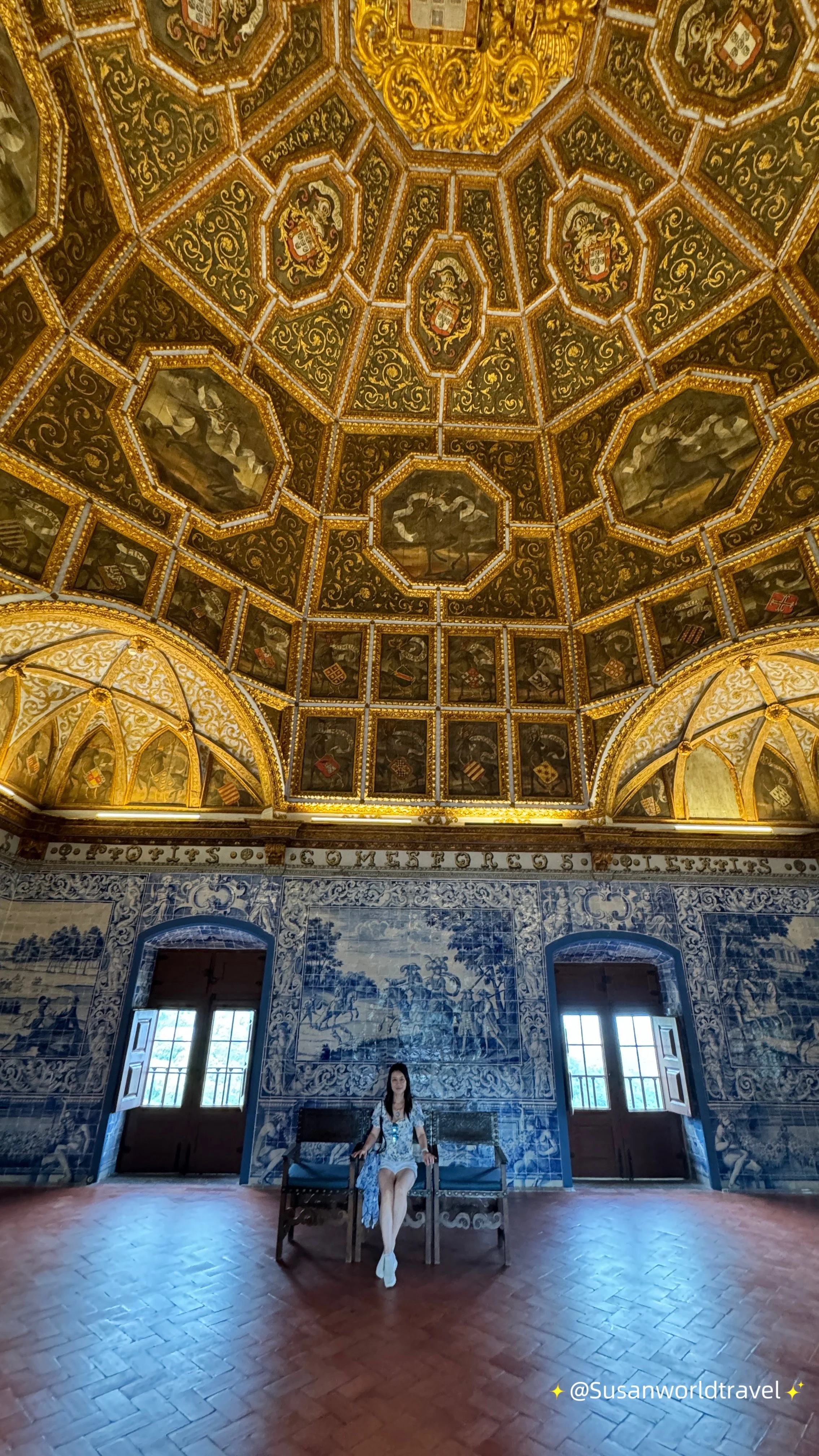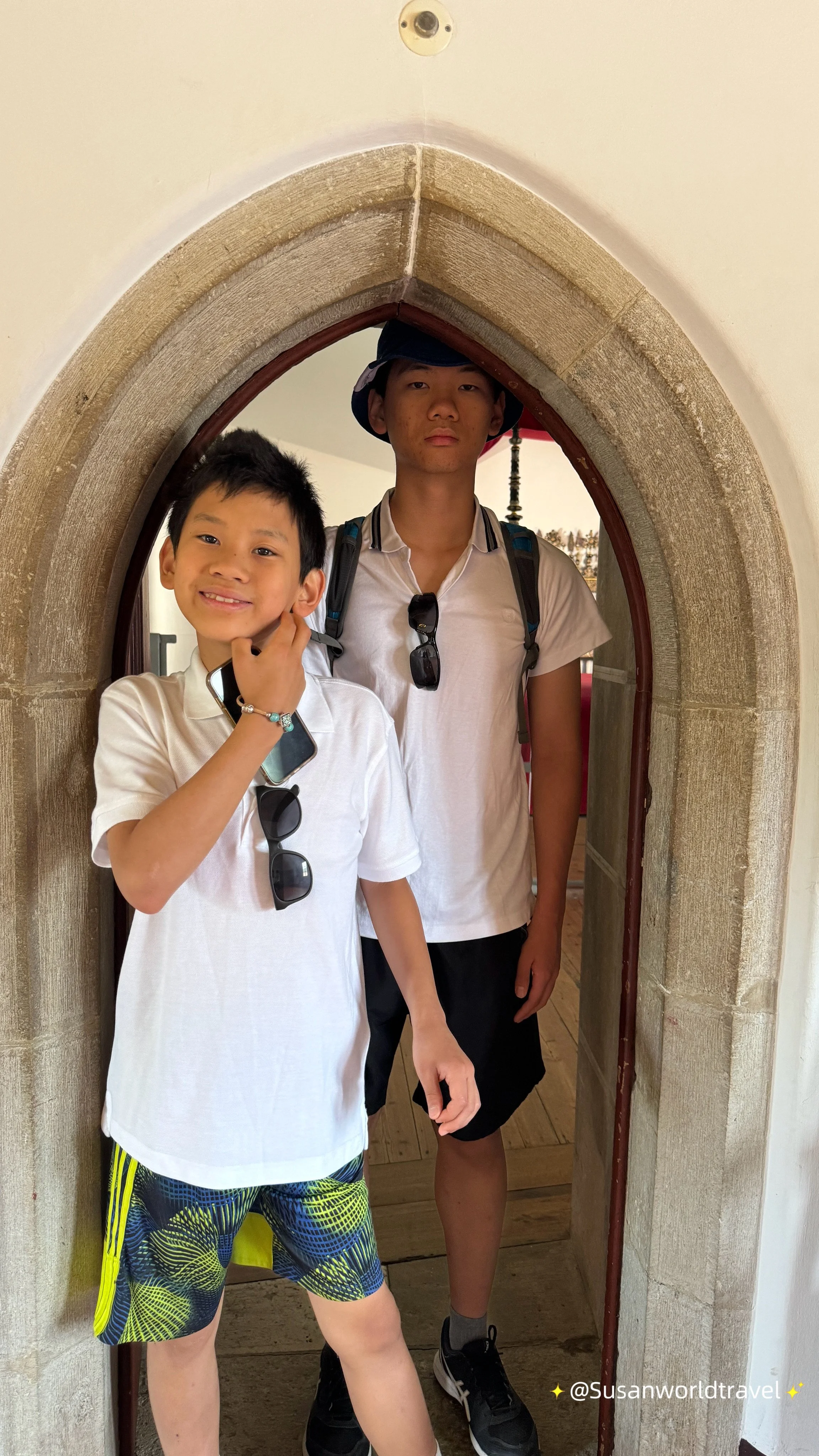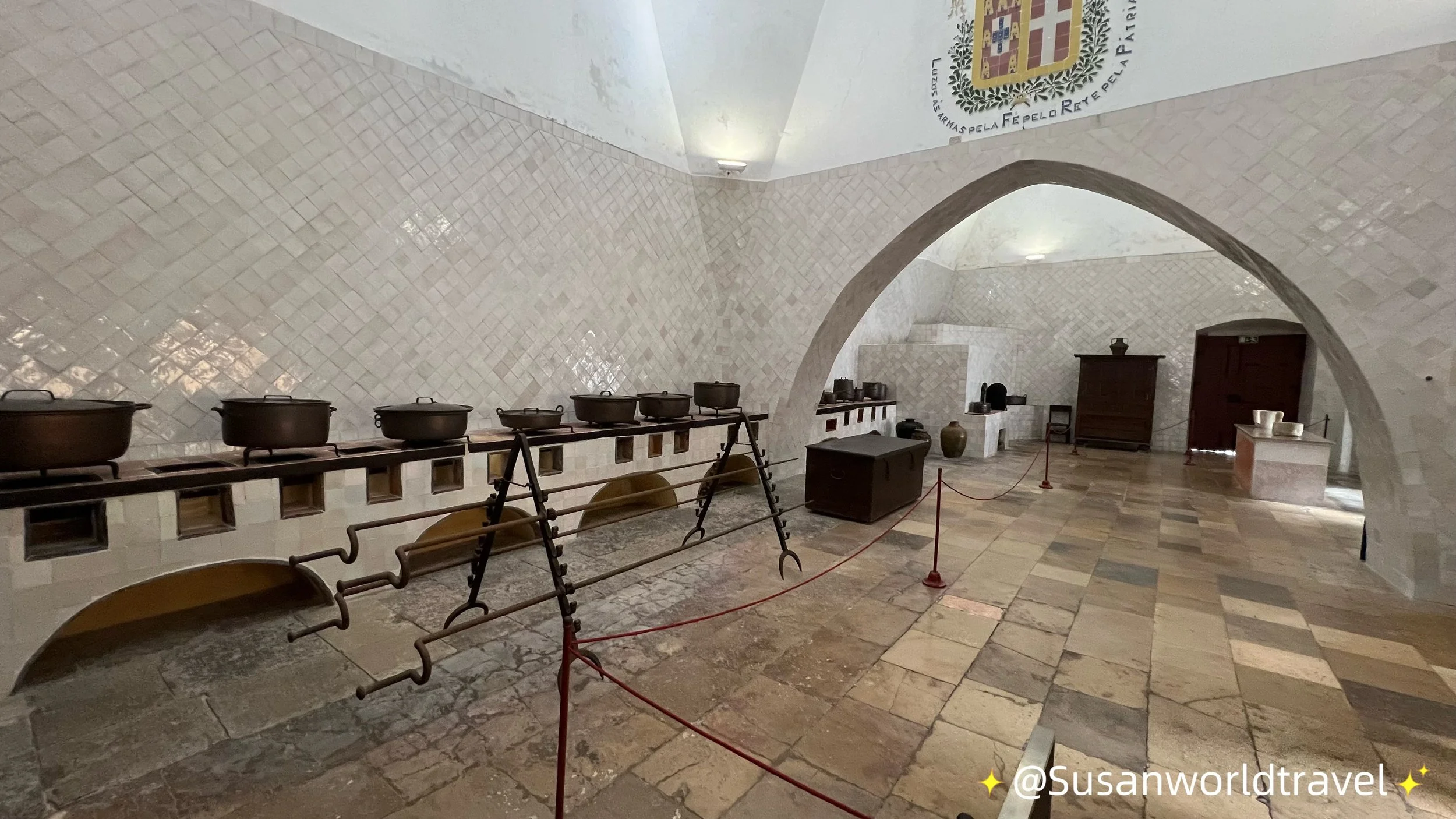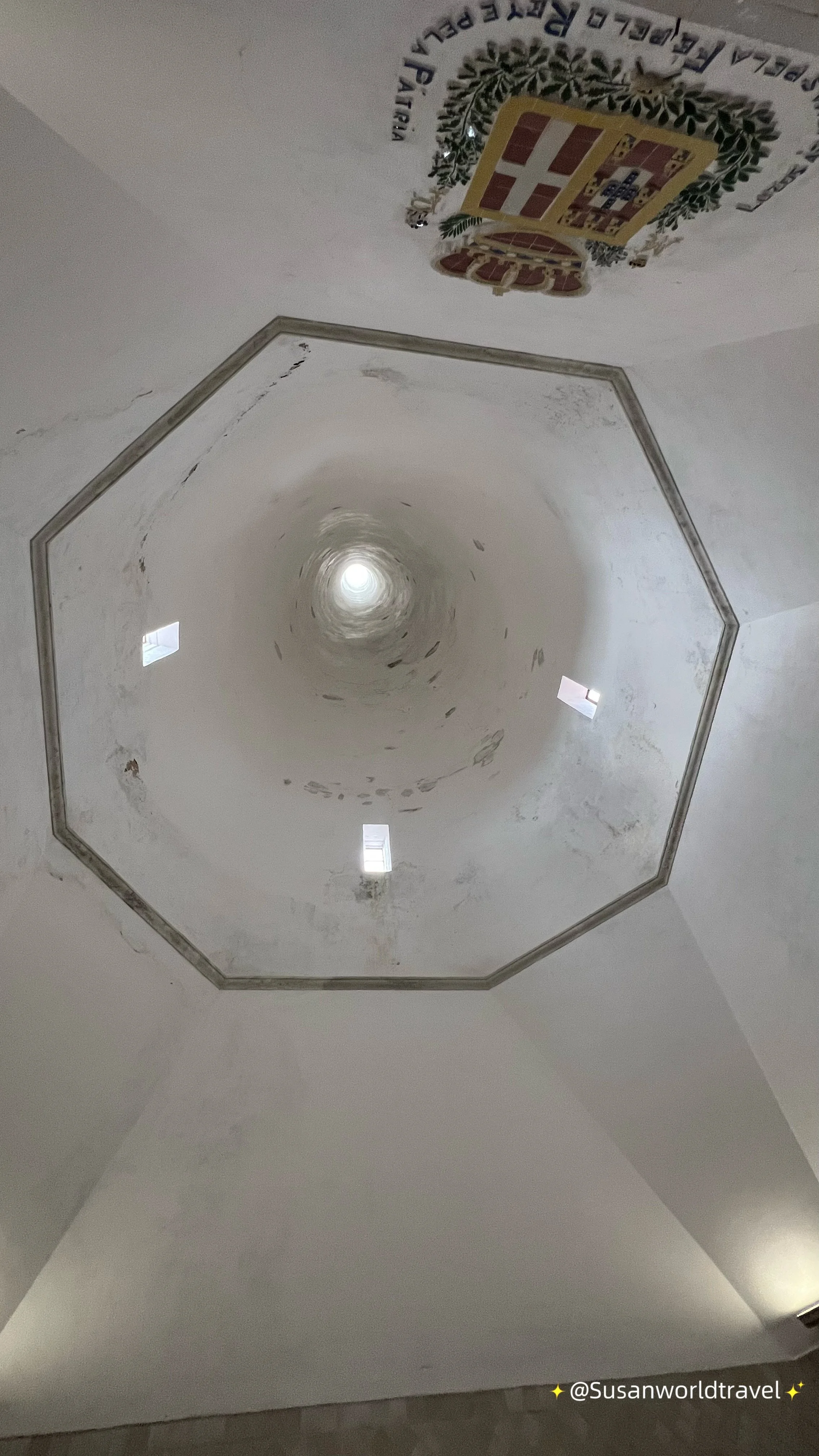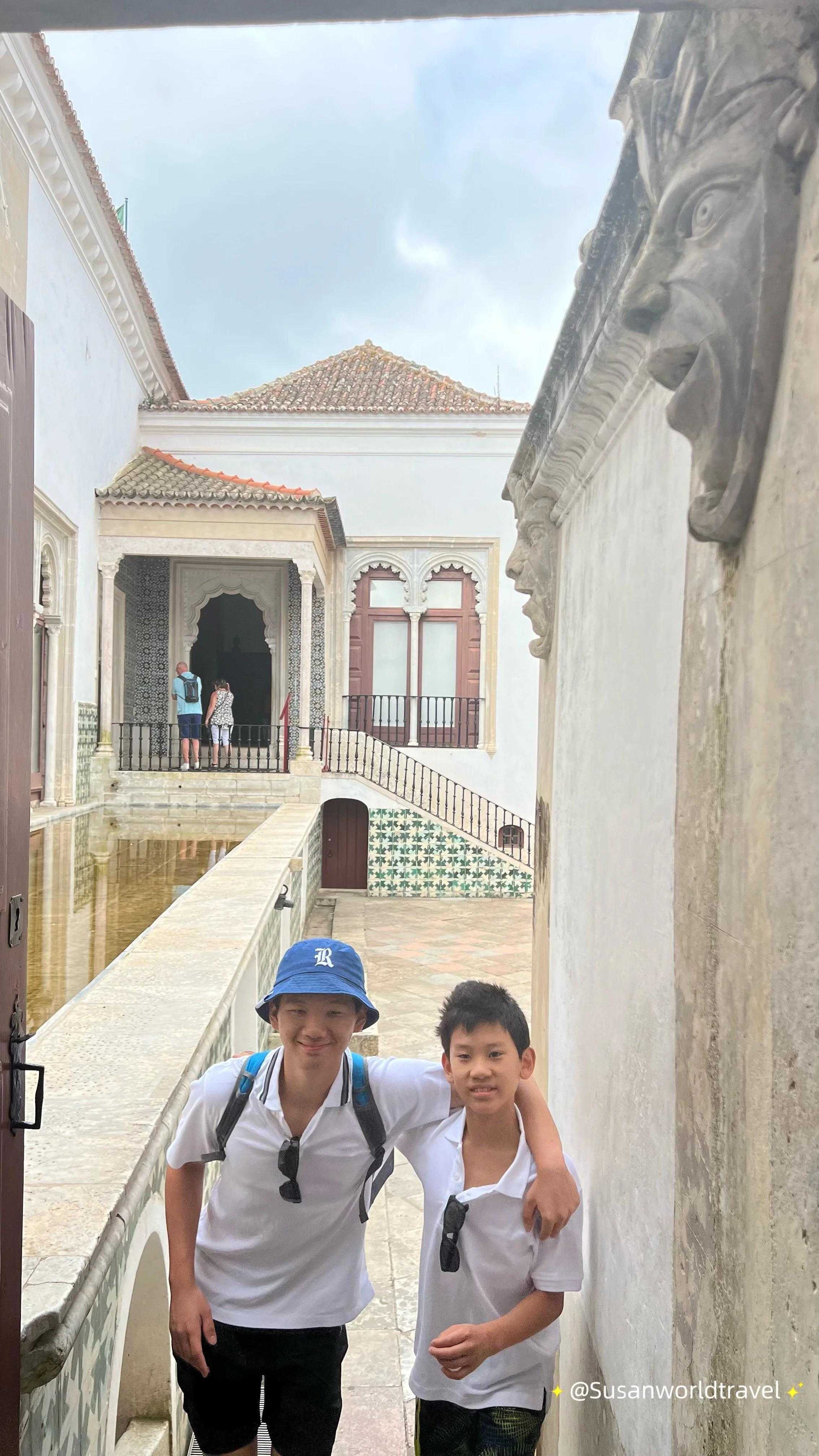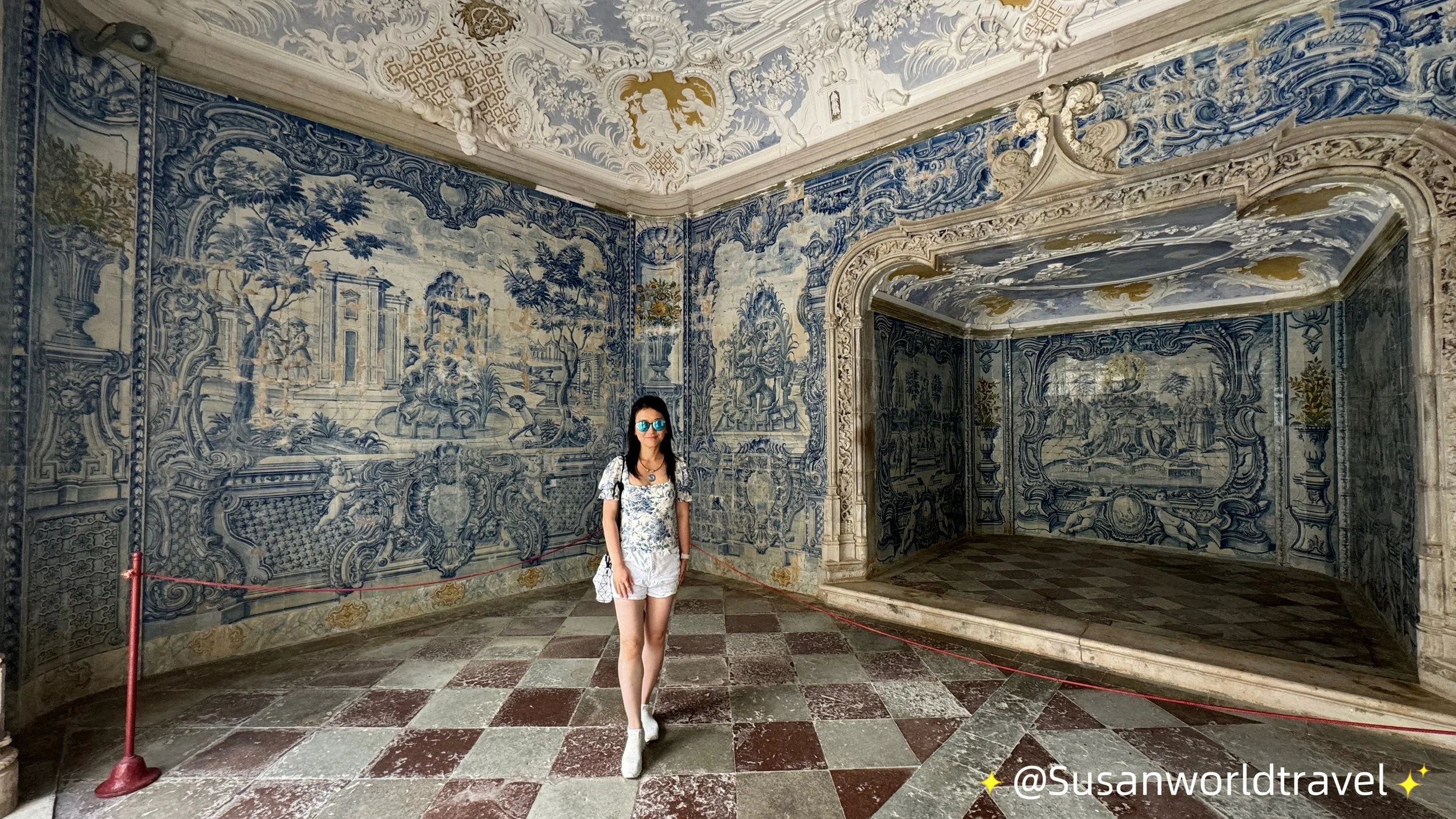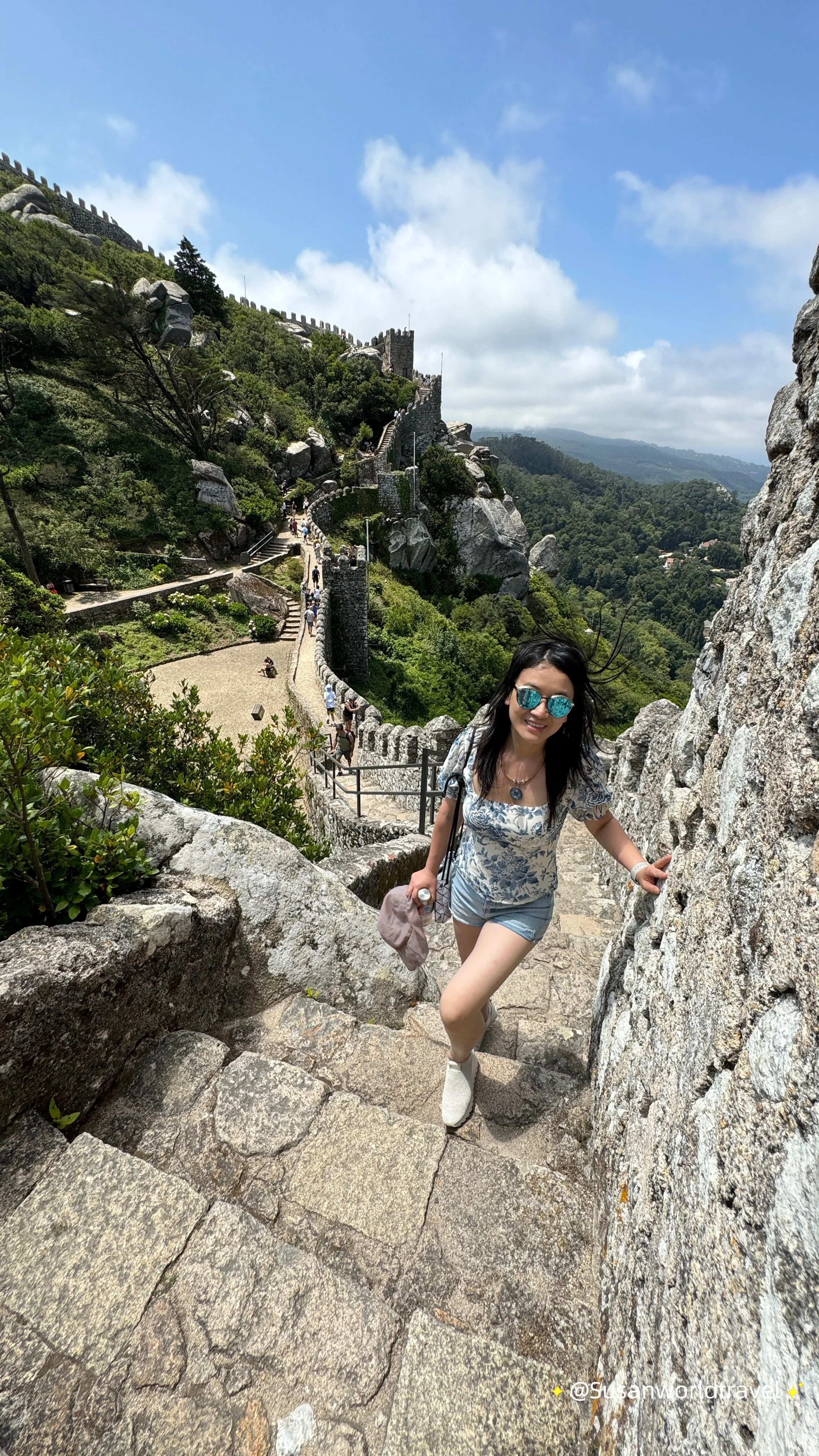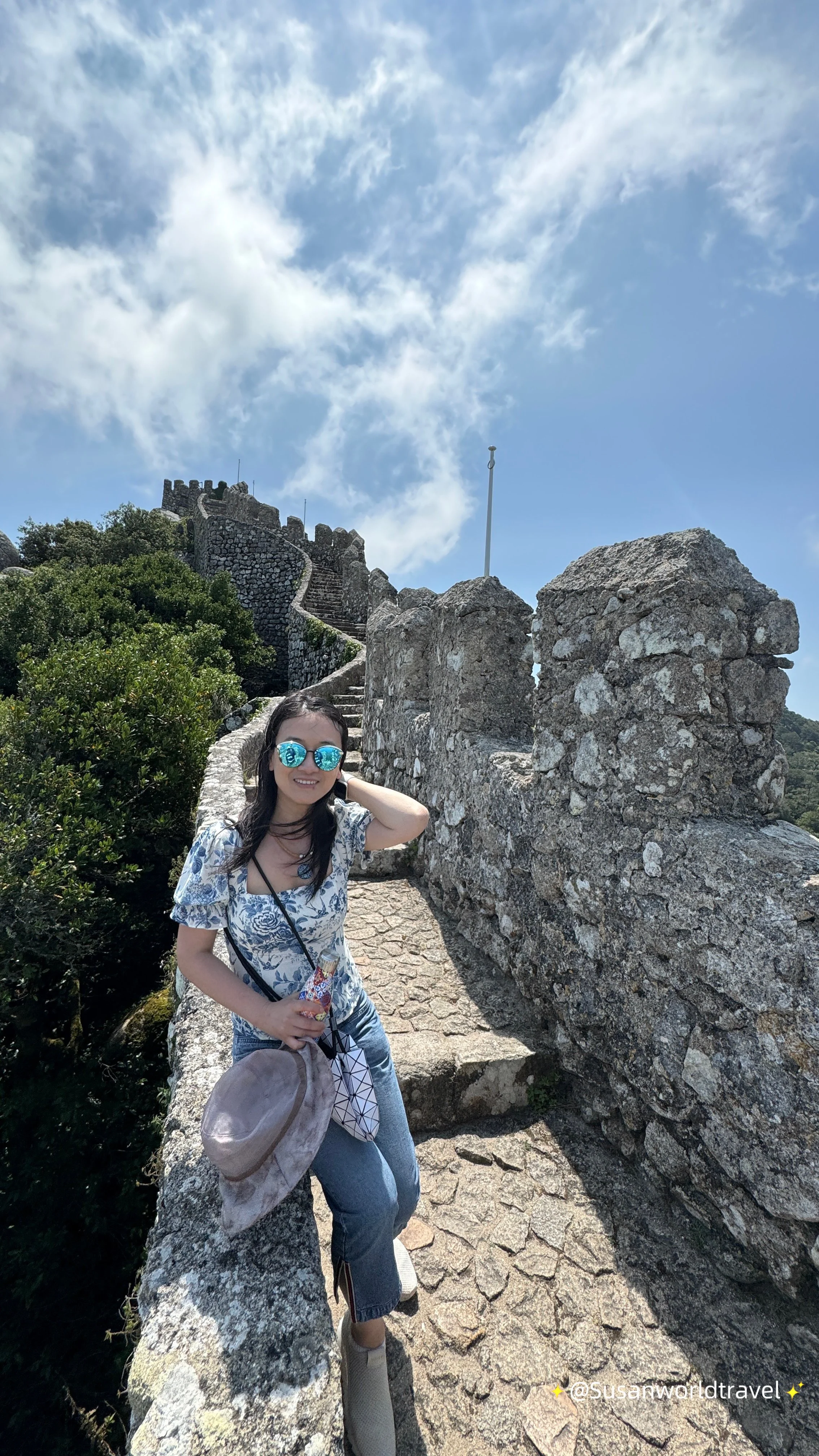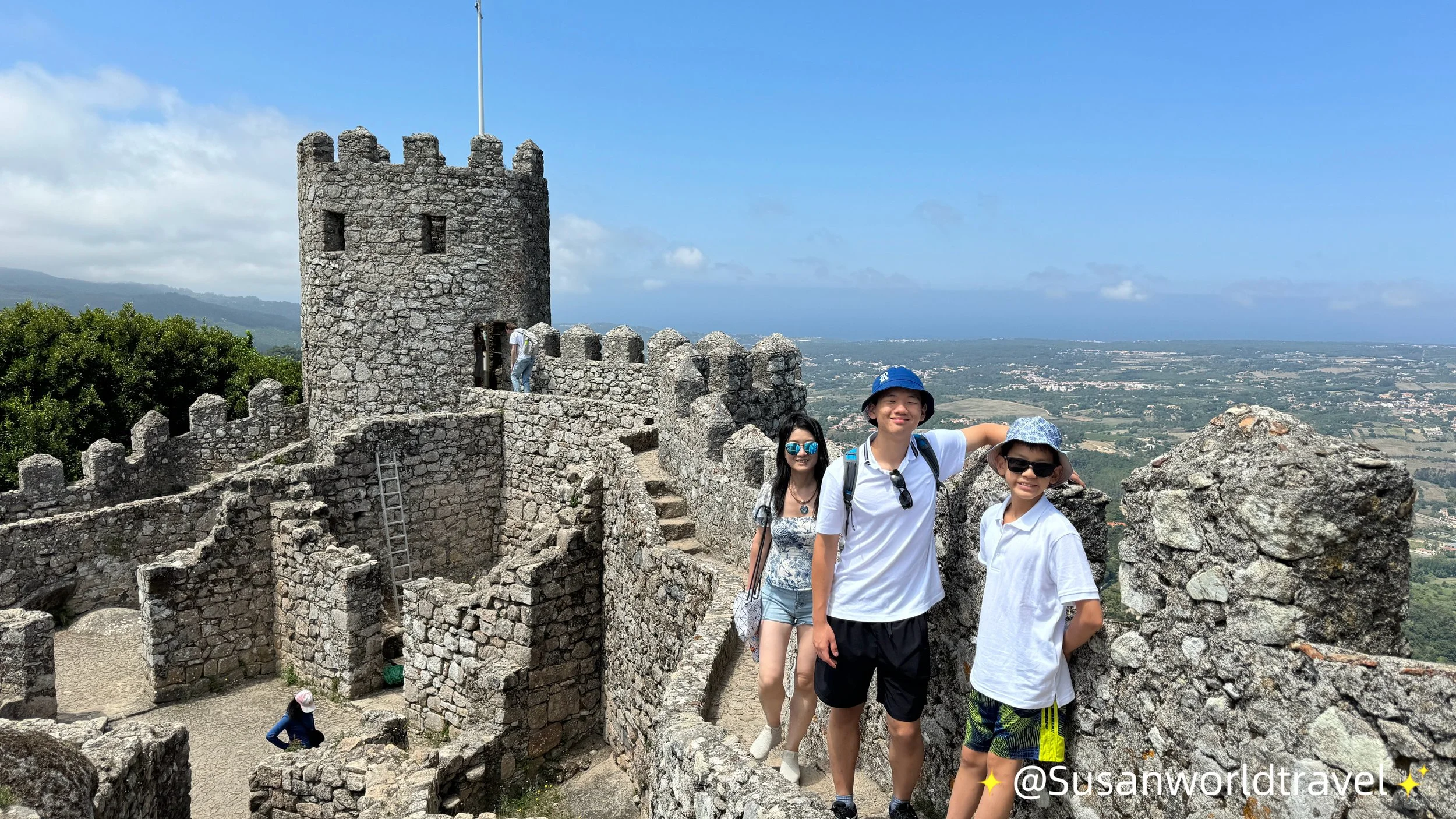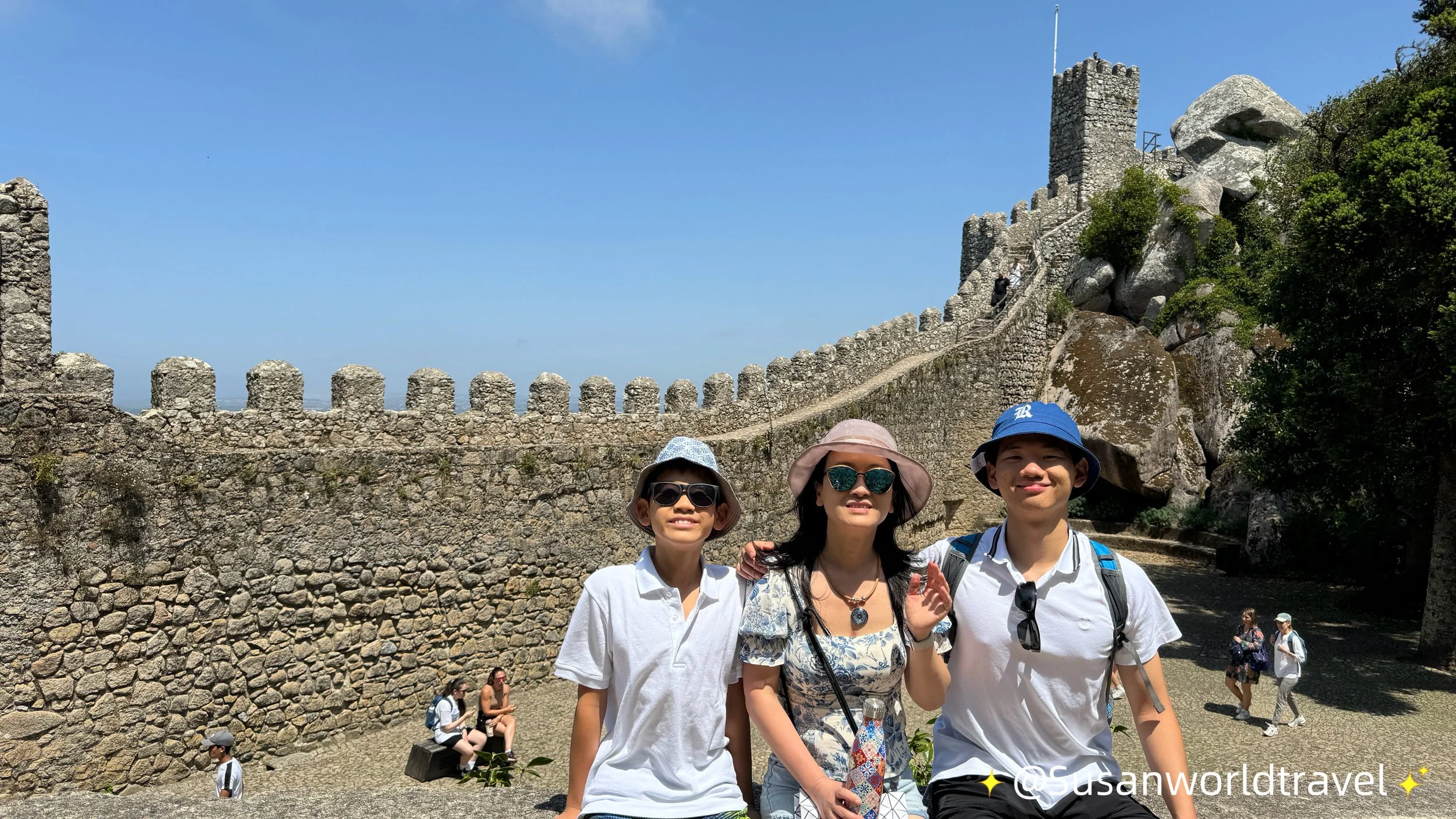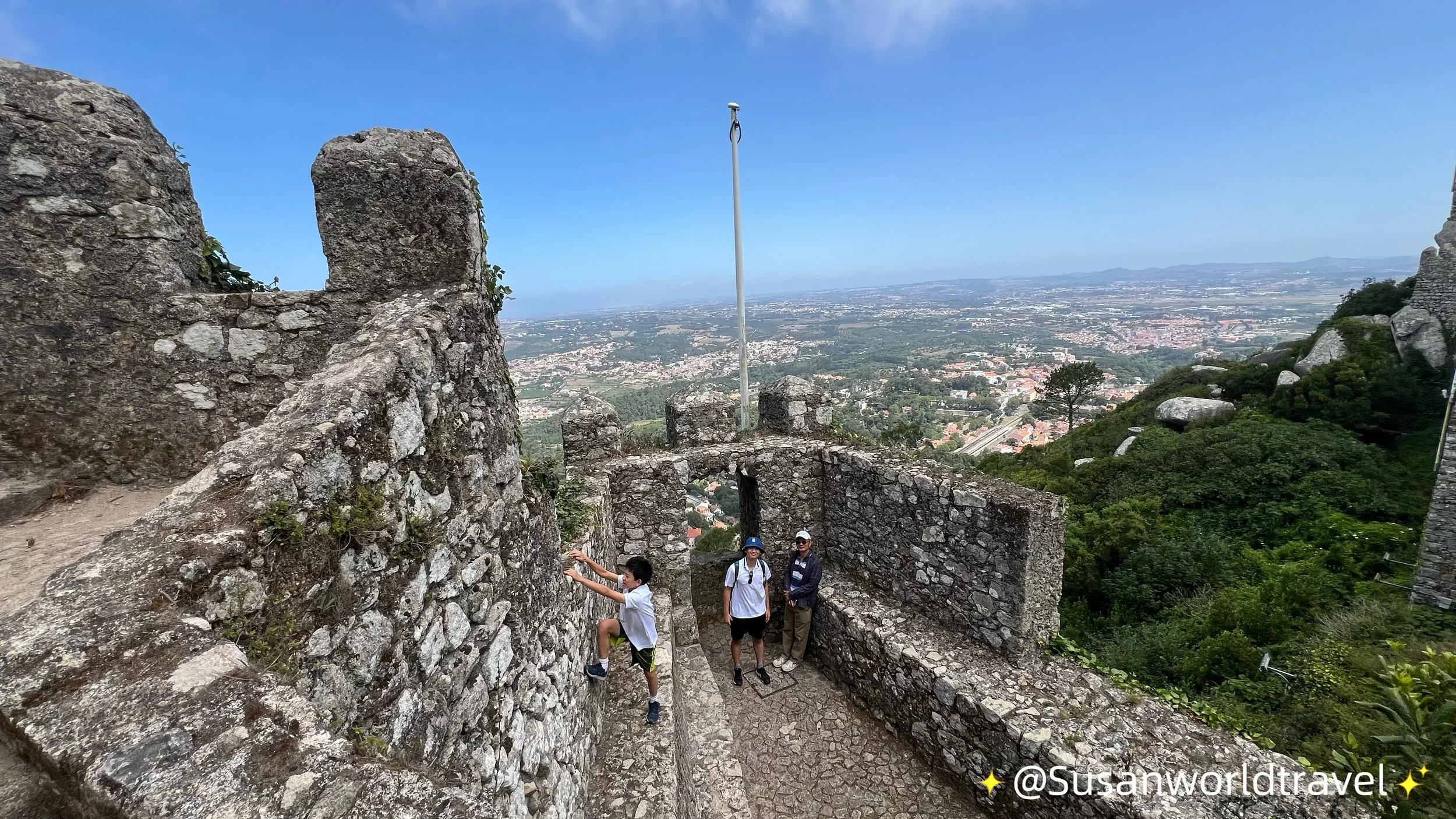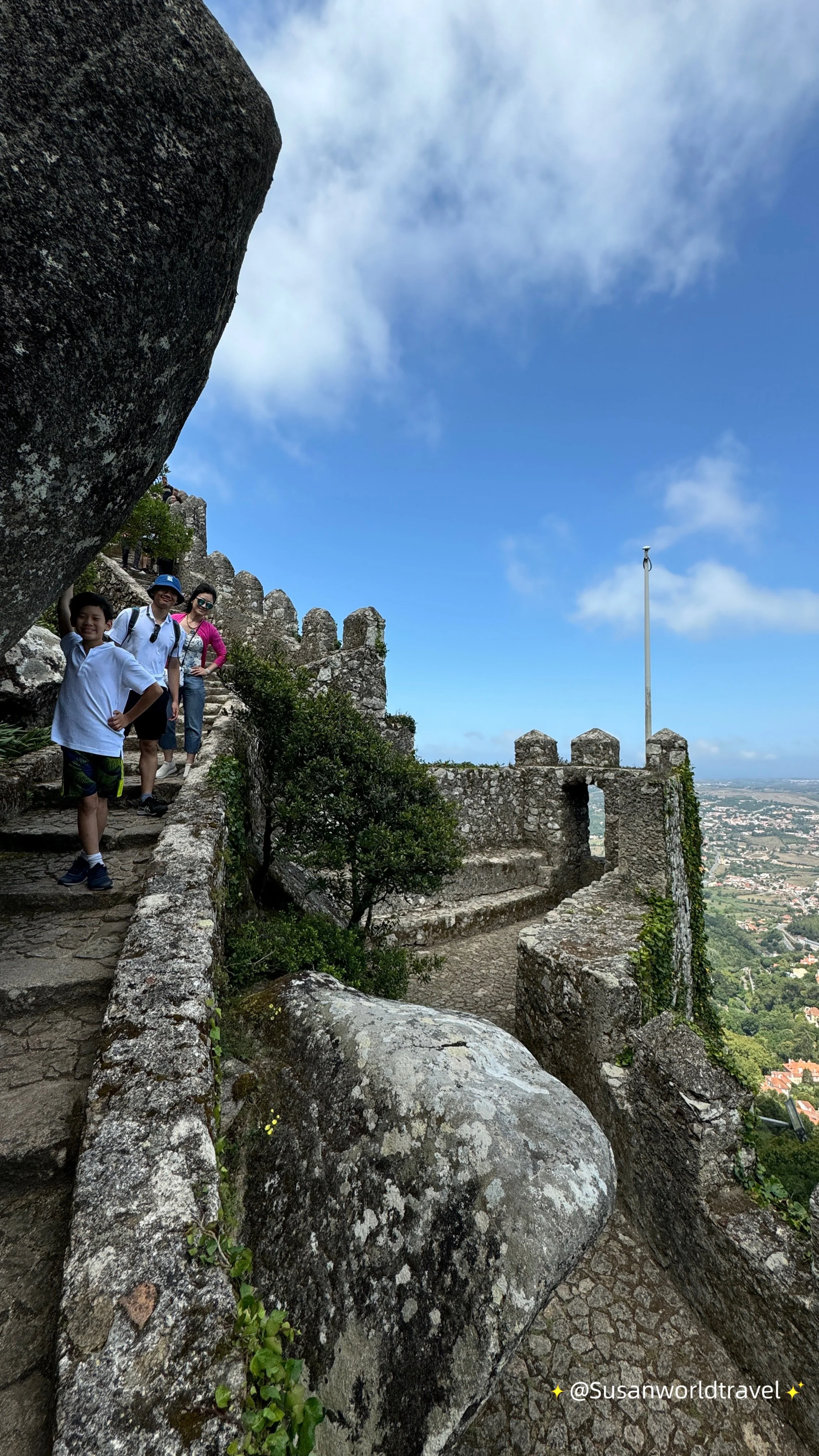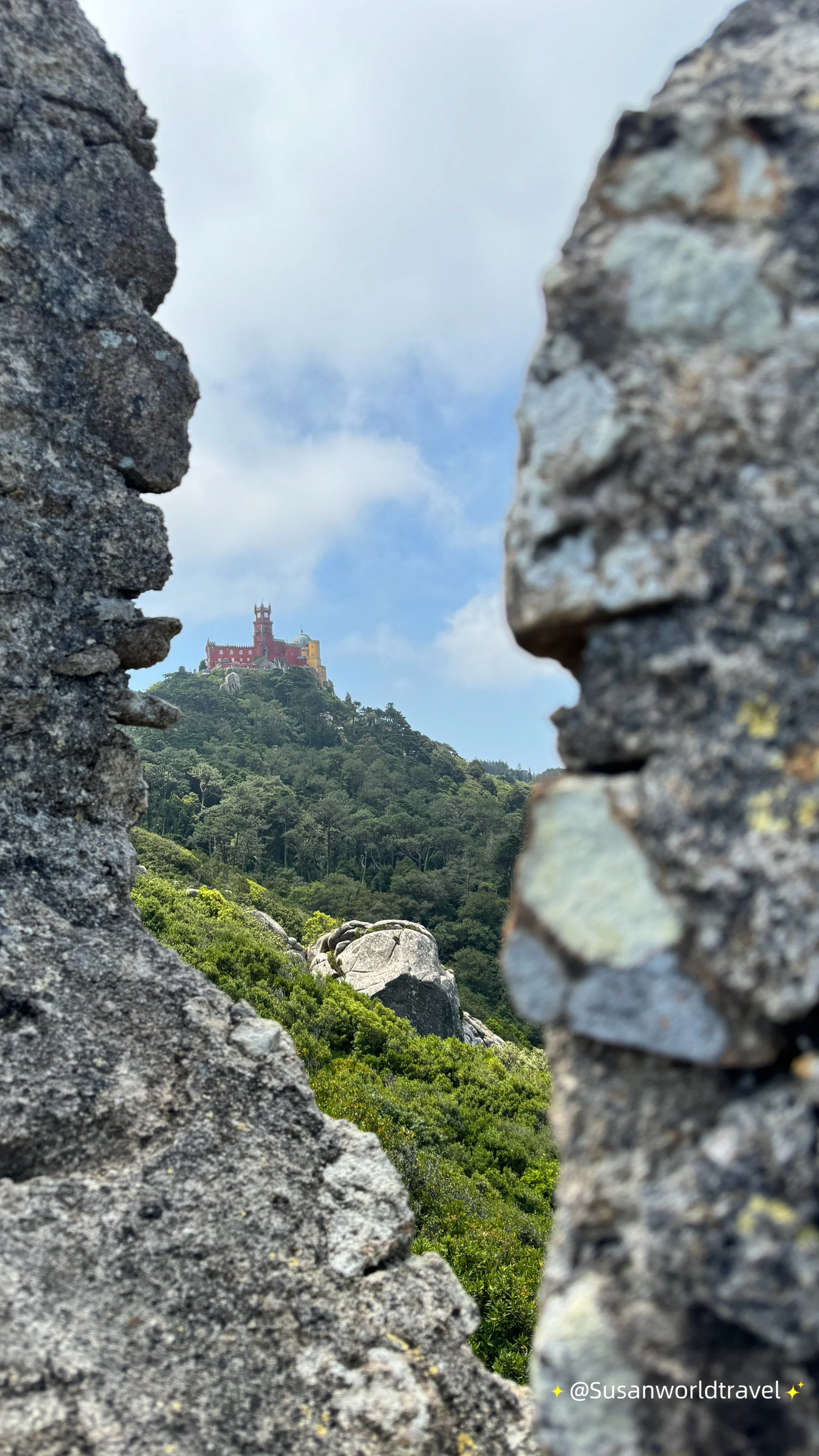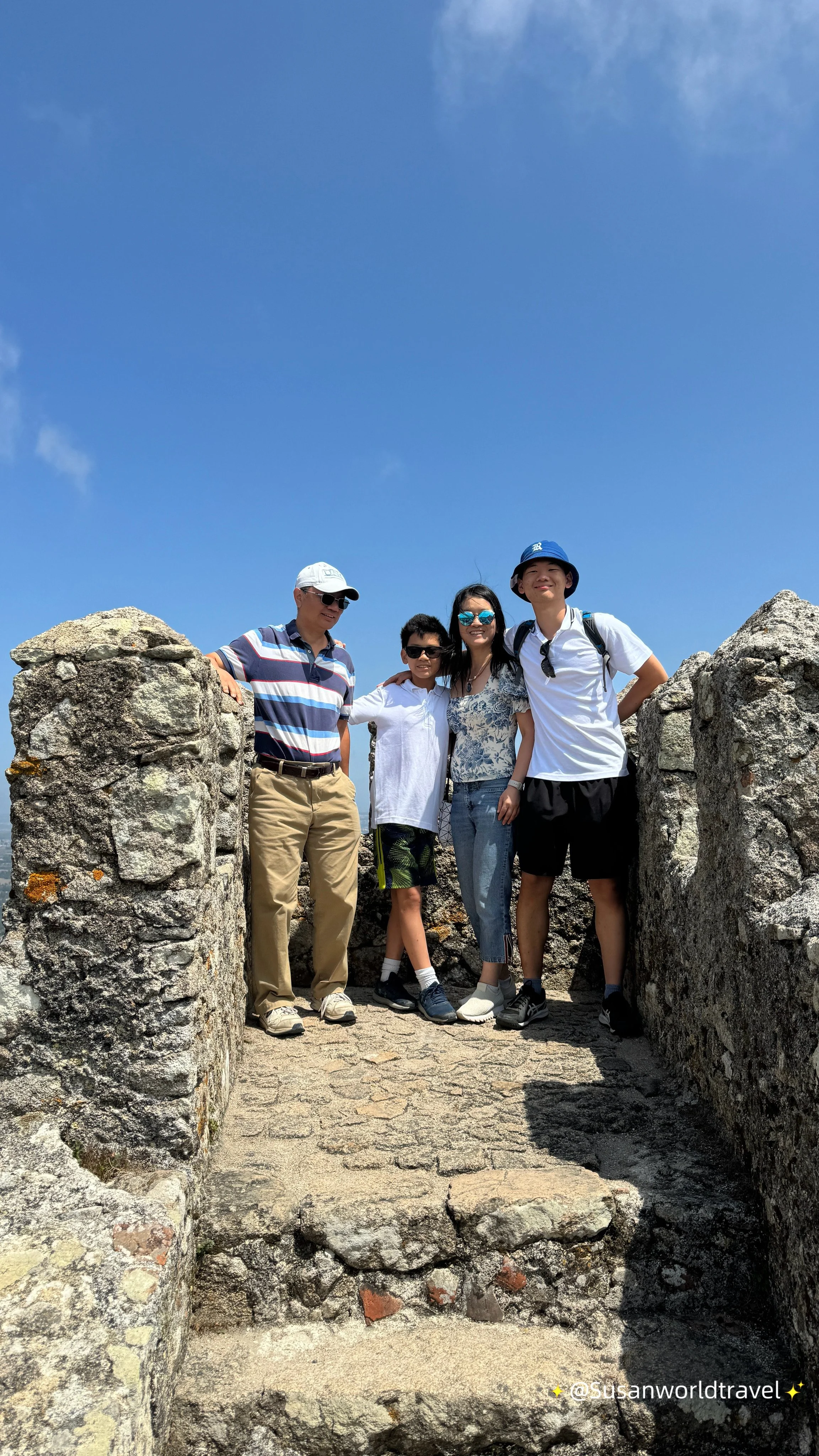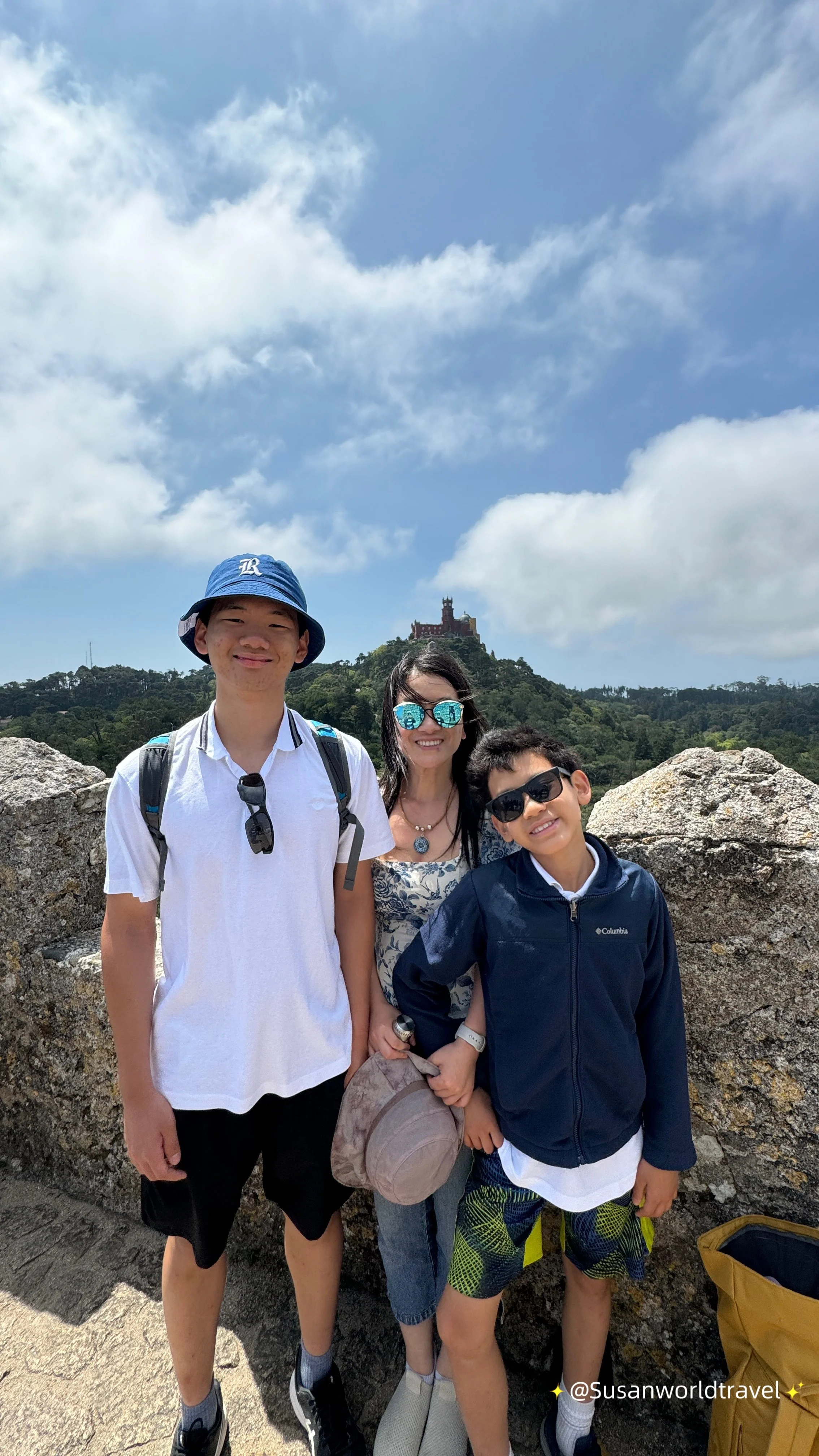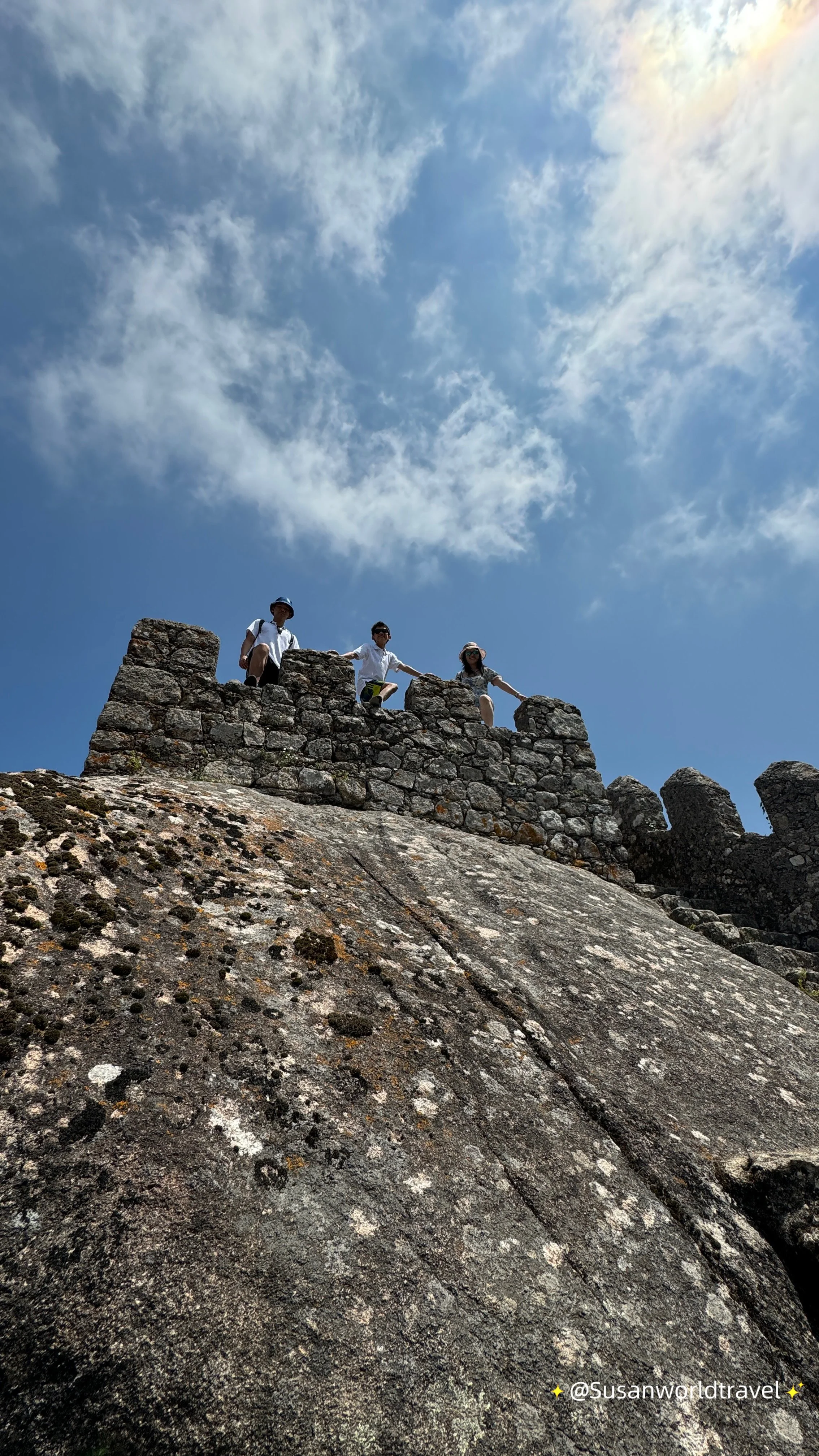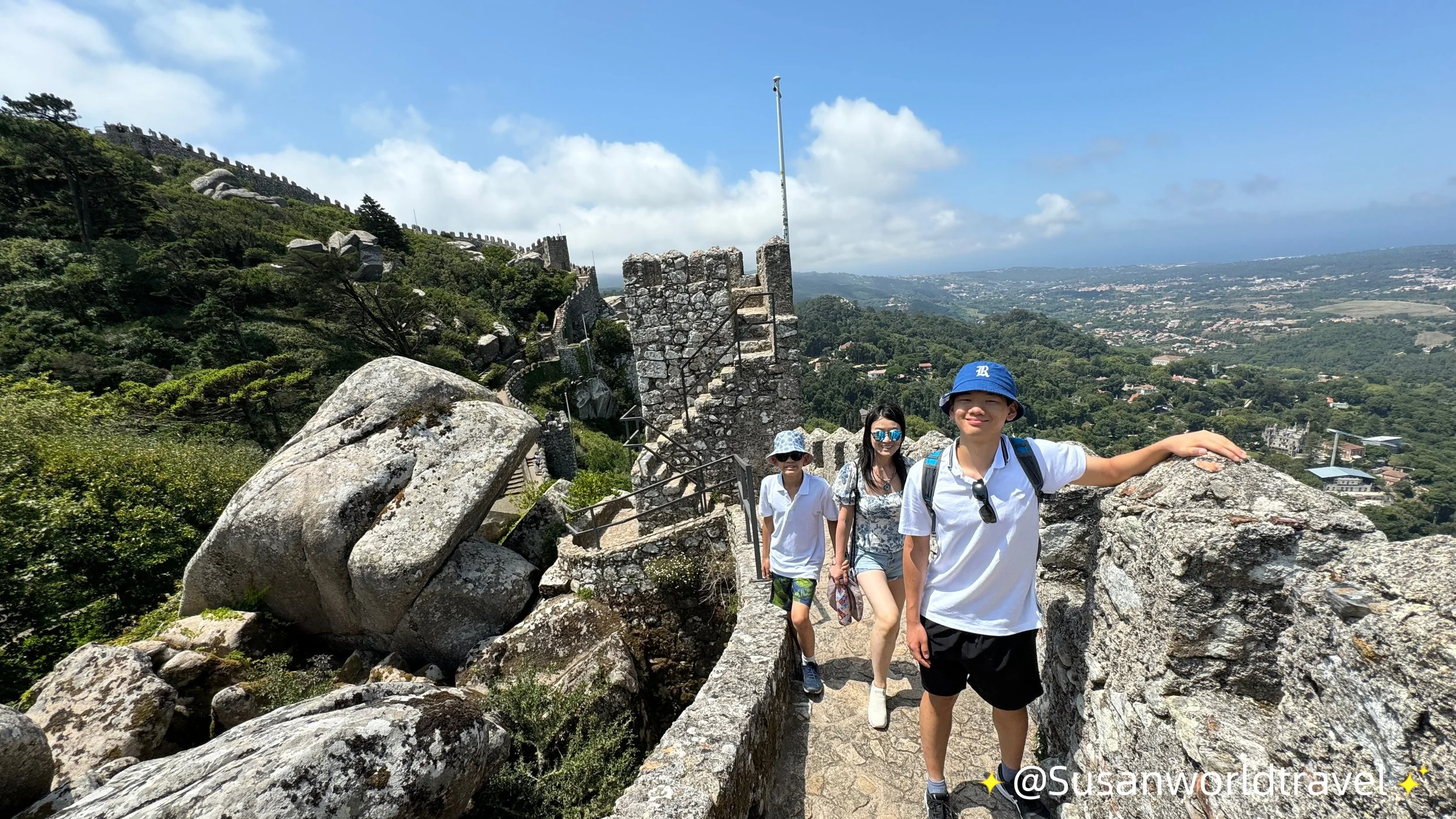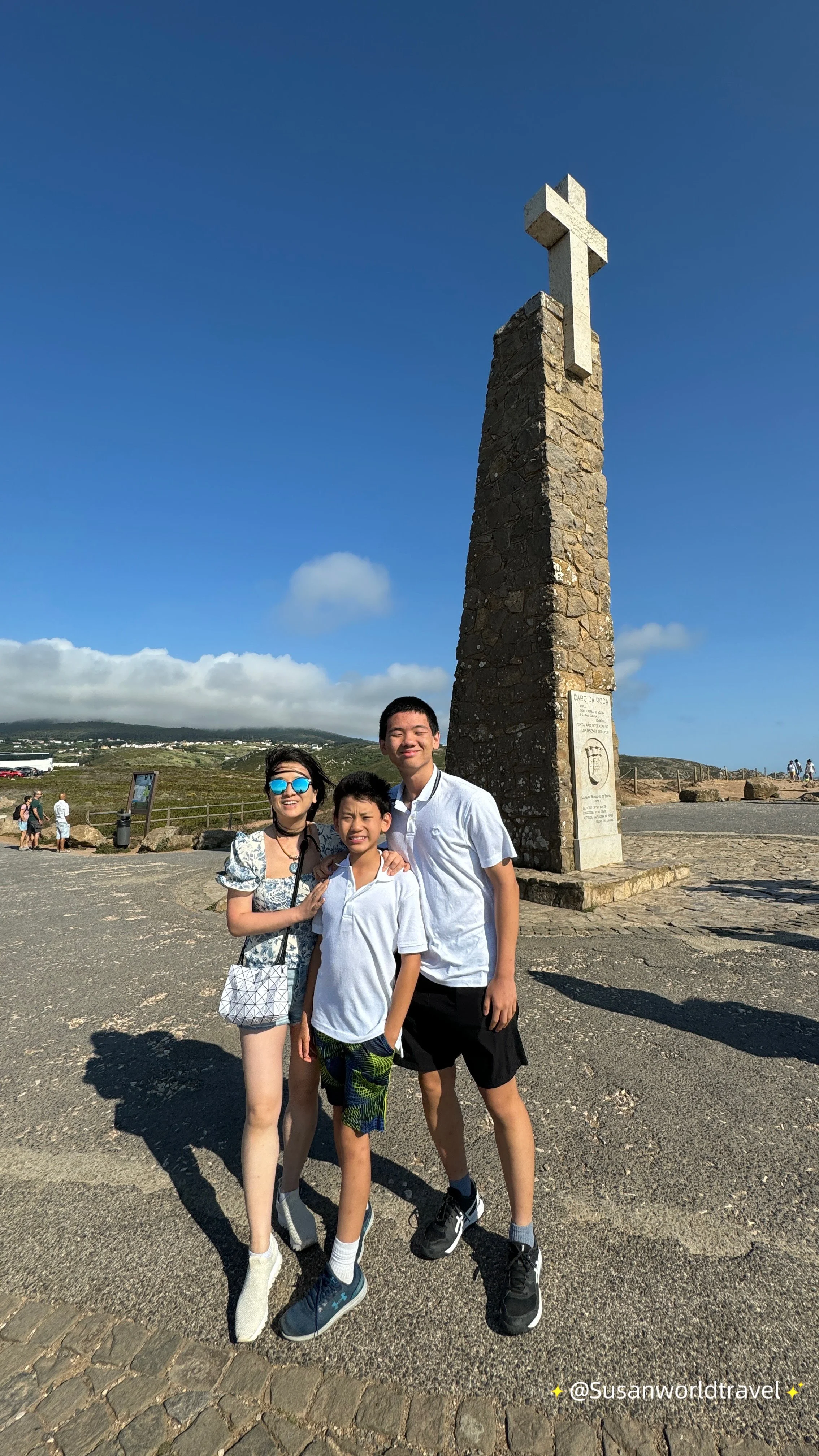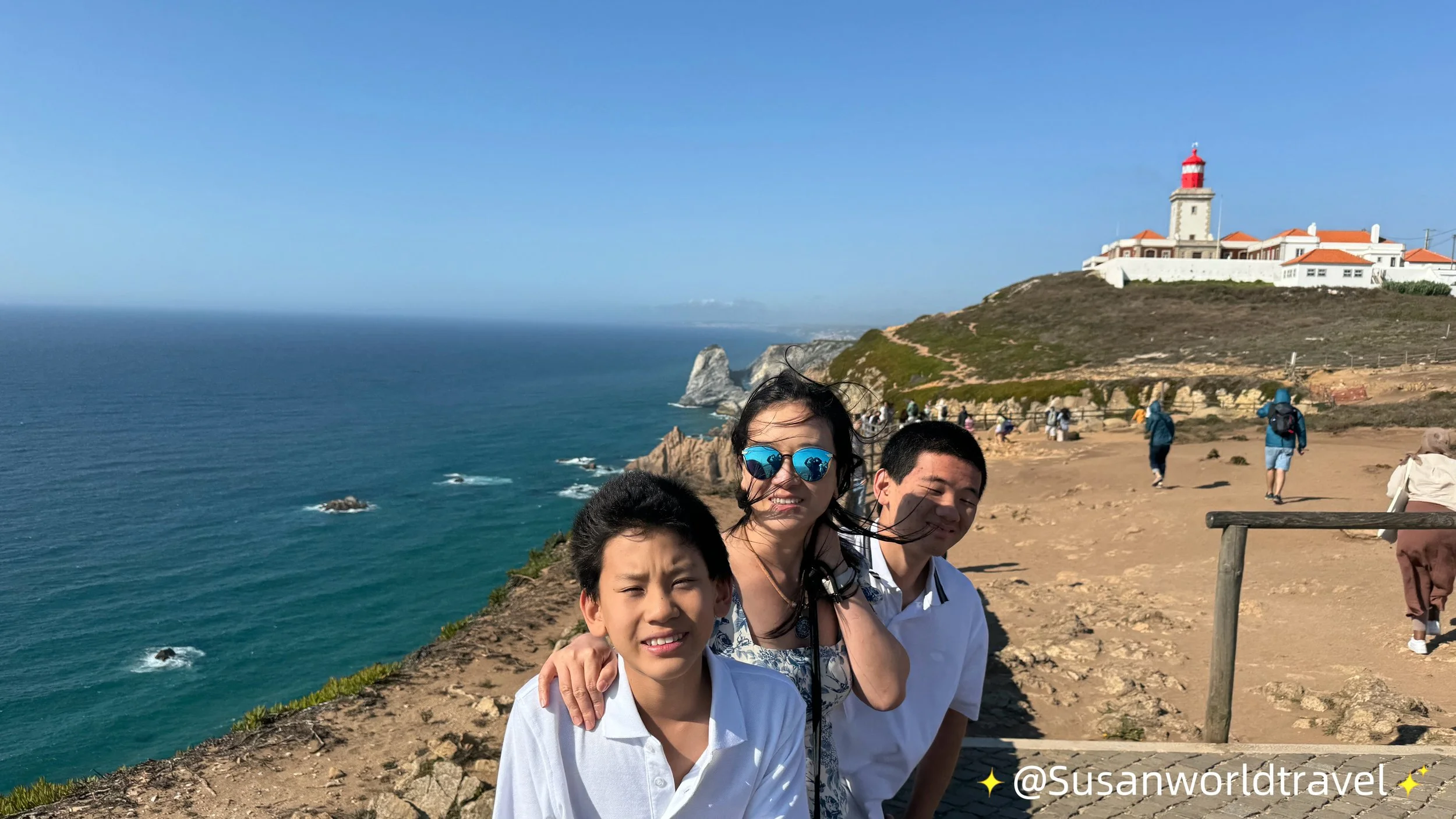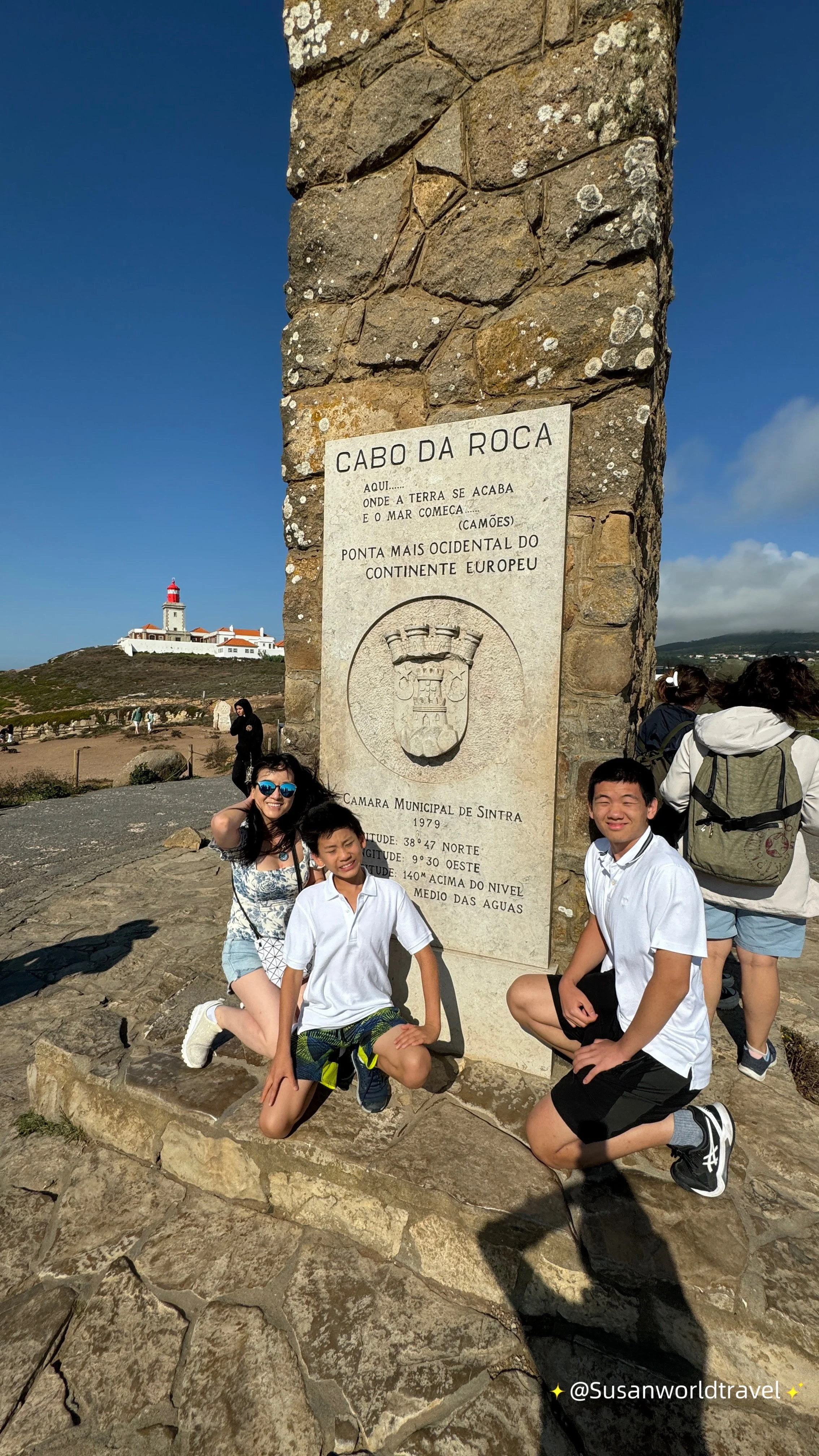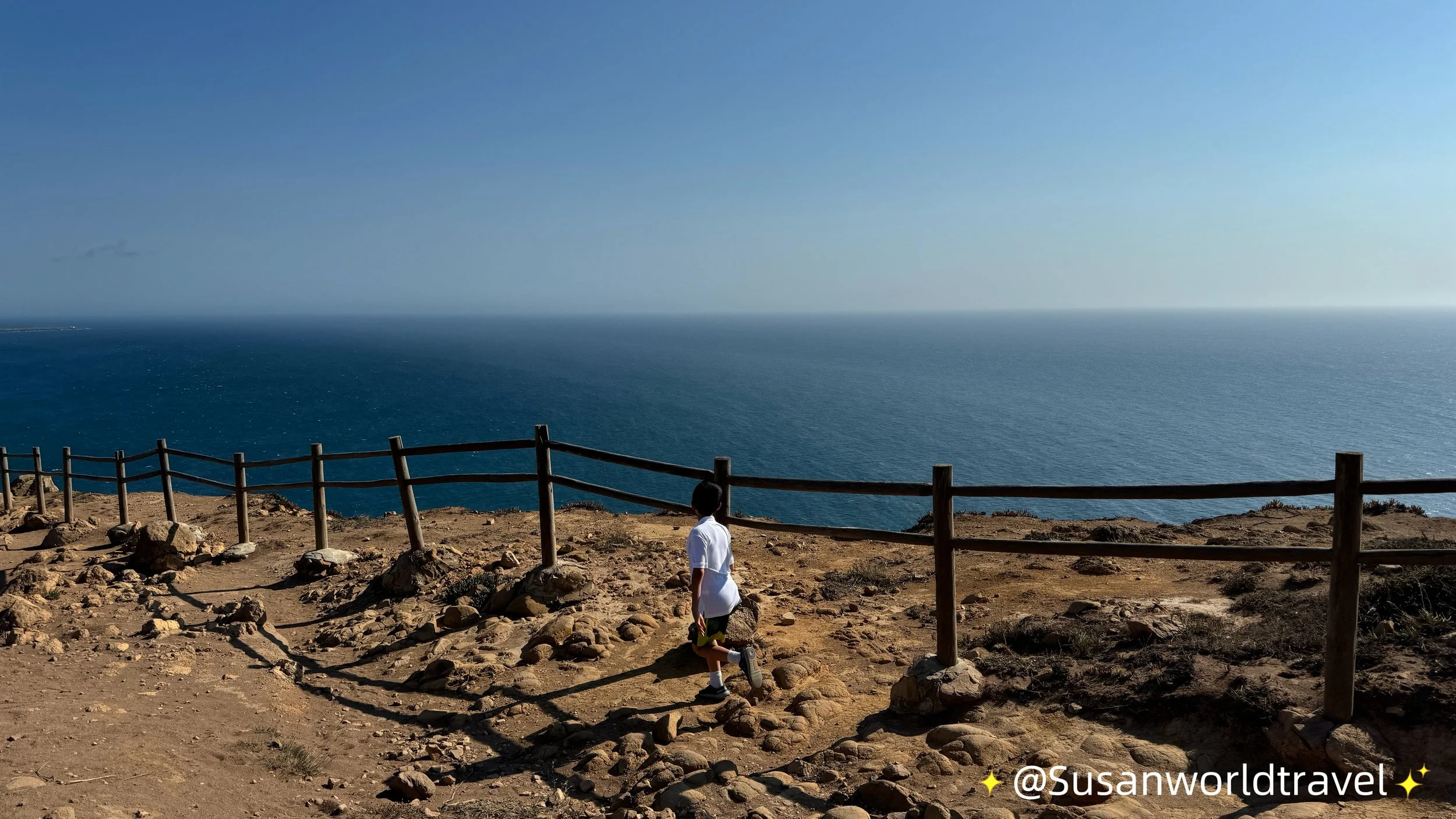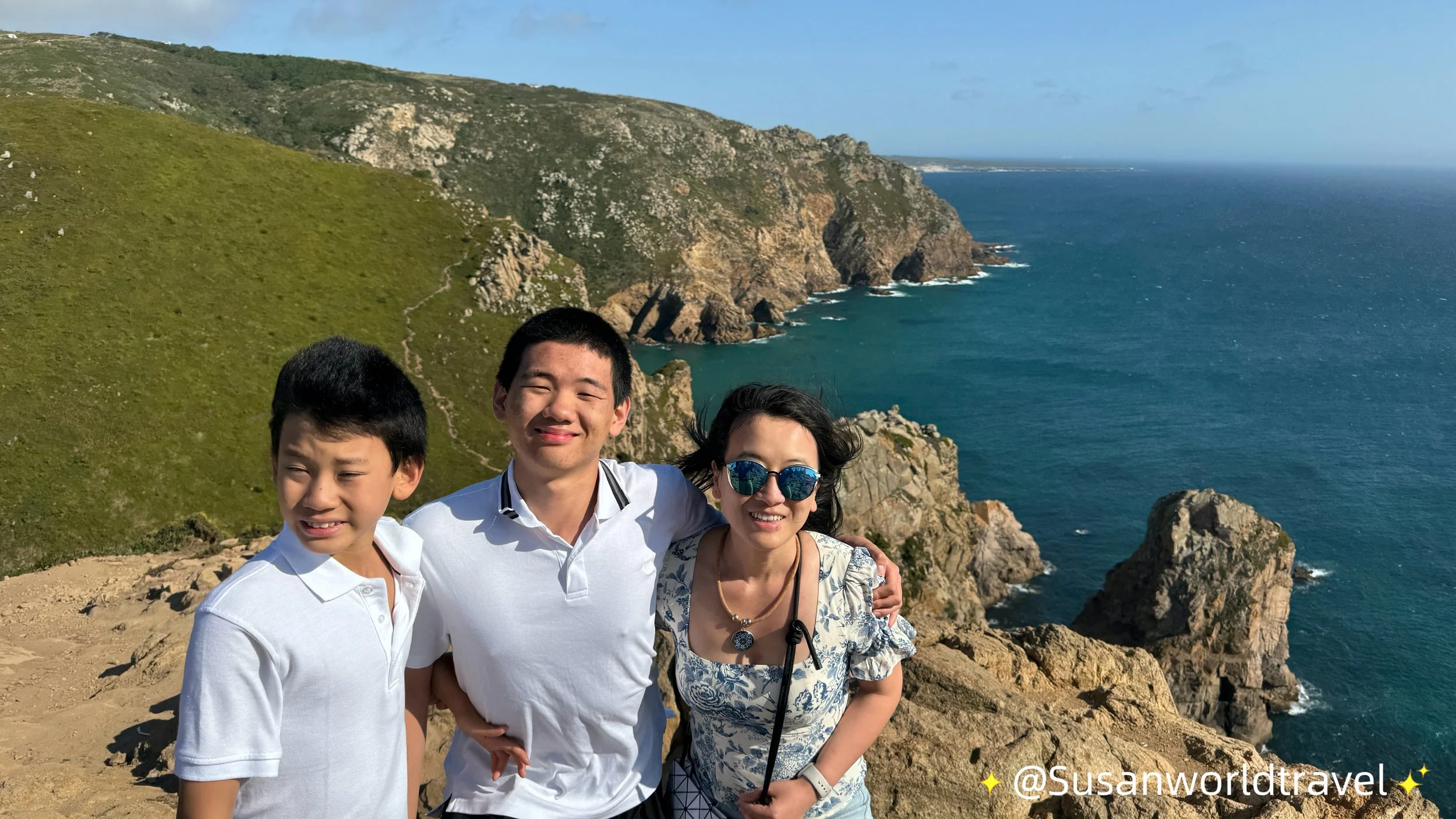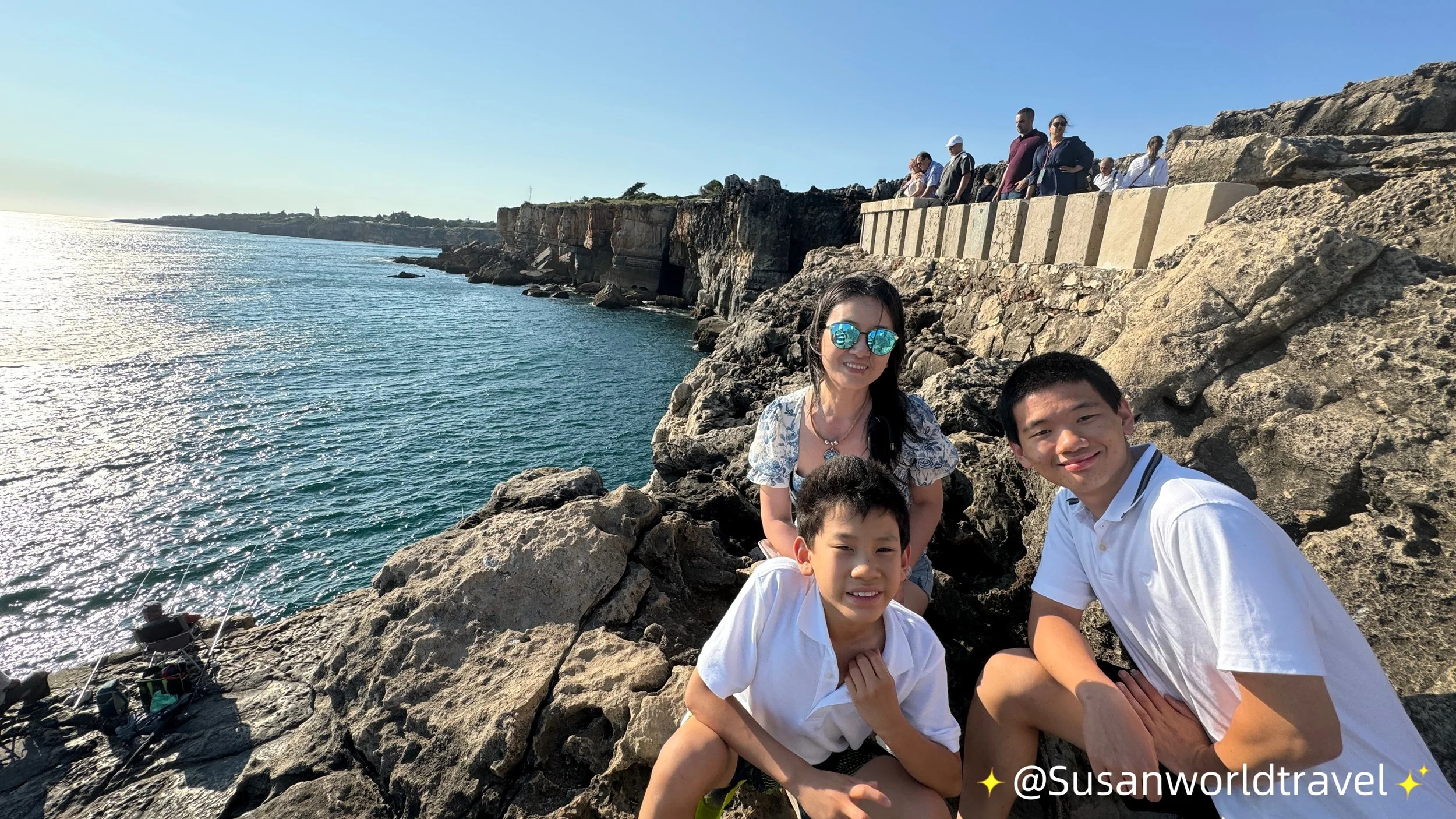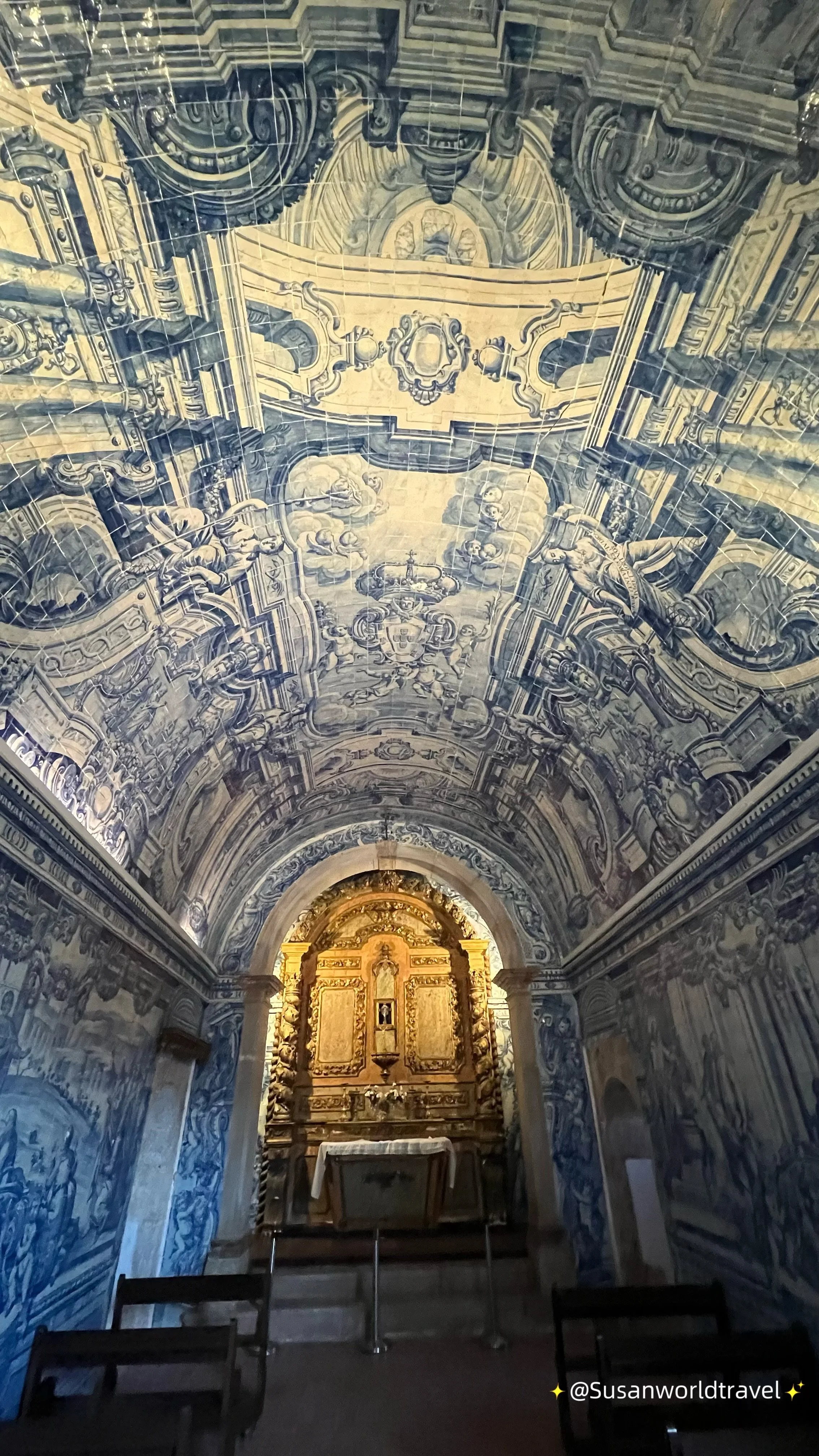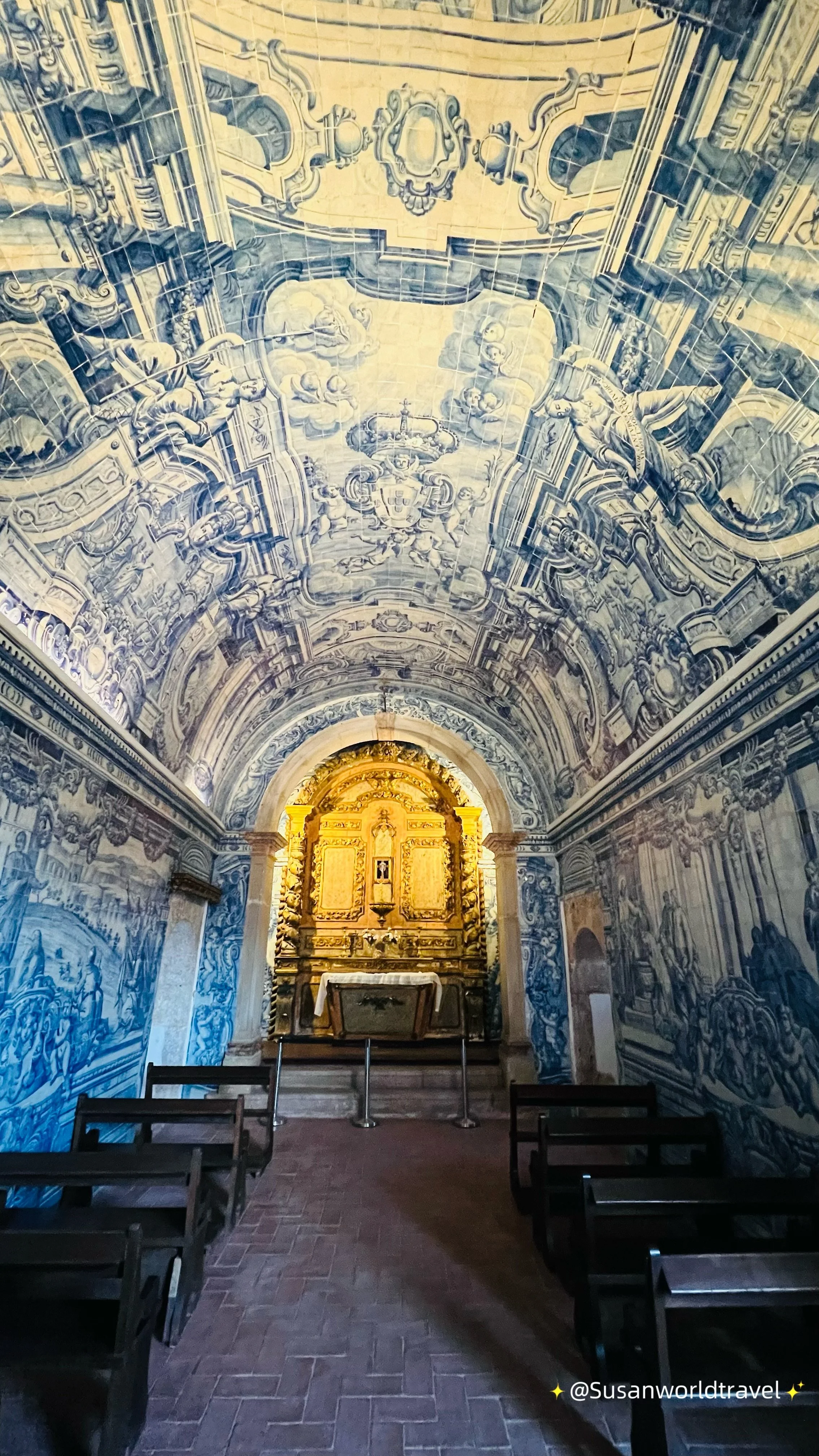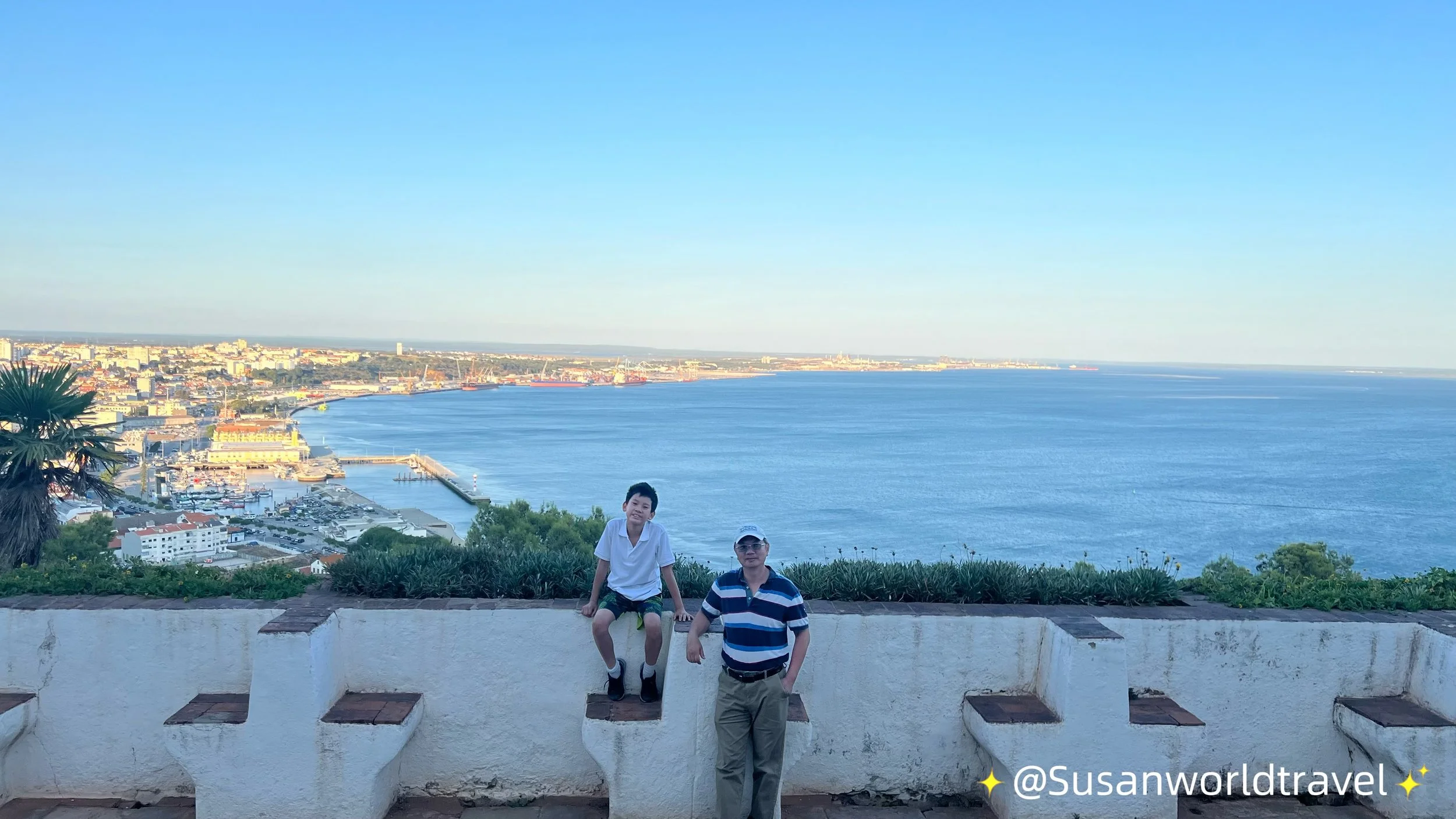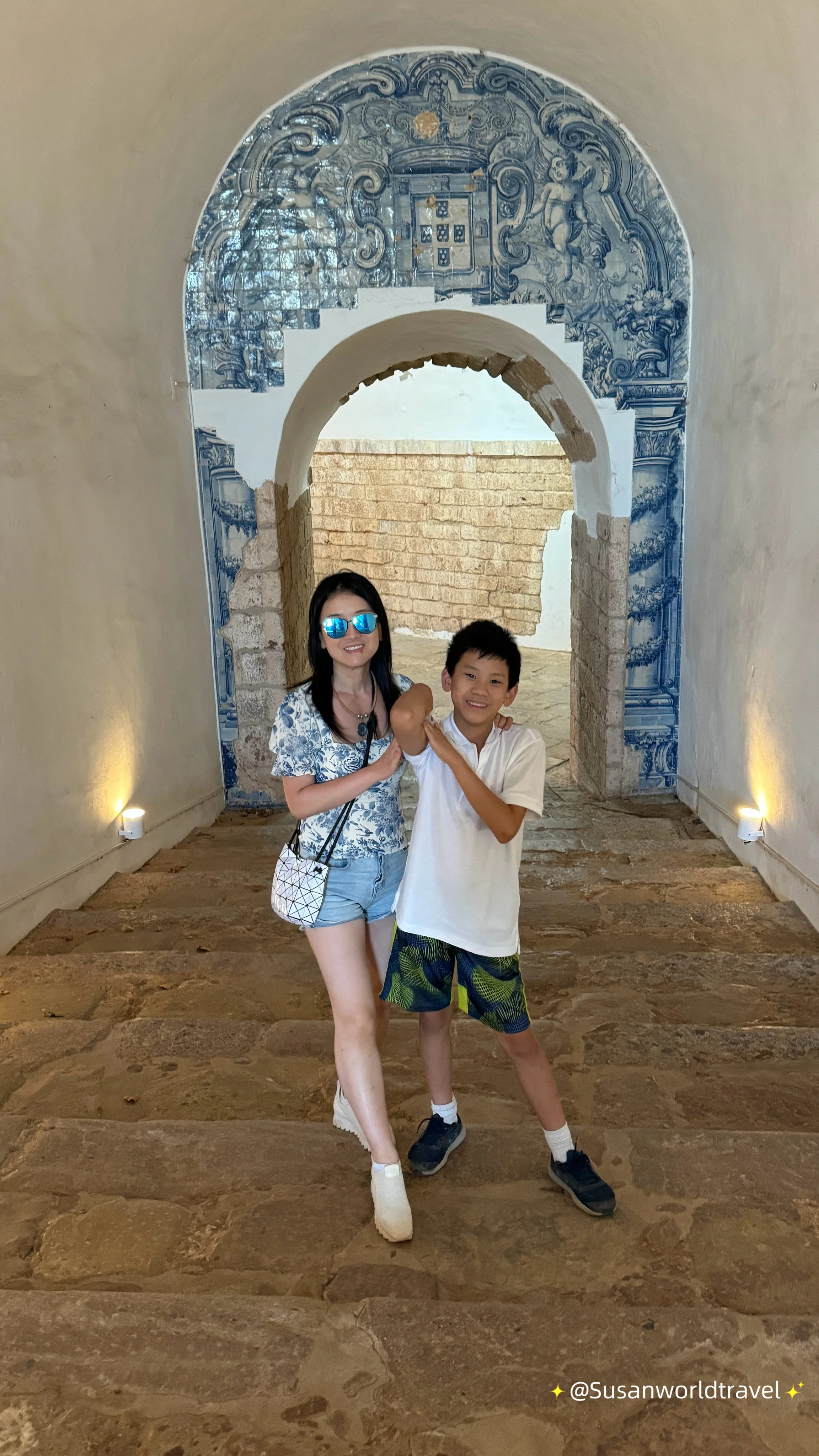Portugal Day 4
From our hotel, we walked to the National Palace of Sintra (Palácio Nacional de Sintra) in the morning. Known for its distinctive twin chimneys, the palace is one of the best-preserved medieval royal residences in Portugal. It dates back to the 14th century and was expanded and renovated over the centuries, reflecting a mix of architectural styles, including Moorish, Gothic, and Manueline.
The palace is famous for its beautiful tilework, decorative ceilings, and royal rooms, including the Swans Room and the Magpie Room. Visitors can explore the grand halls, chambers, and courtyards, each showcasing the palace’s rich history as a royal residence. Its central location in Sintra makes it a great starting point for exploring the town.
Moorish Castle (Castelo dos Mouros) is a historic fortress perched on a hilltop near Pena Palace. The castle dates back to the 8th or 9th century and was built by the Moors during their occupation of the Iberian Peninsula. It played a strategic role in the defense of the region, offering panoramic views of the surrounding countryside, including Sintra, the Atlantic Ocean, and the distant Pena Palace.
The castle’s ruins are characterized by its stone walls, battlemented towers, and watchtowers, which reflect the medieval military architecture of the Moors. Visitors can walk along the walls and enjoy spectacular views of the surrounding area, including the town of Sintra and the nearby Sintra Mountains. The Moorish Castle, together with Pena Palace, is part of the Sintra Cultural Landscape, which is a UNESCO World Heritage site.
Although we visited in June, it was quite cold and windy in Sintra, so we decided to schedule our hike in the afternoon, when the temperature had warmed up compared to the morning.
After visiting the castle, we picked up our rental car from Sixt and drove west for about 35 minutes to Cabo da Roca, the westernmost point of mainland Portugal and continental Europe. Known for its stunning cliffs, dramatic coastal views, and vast Atlantic Ocean horizon, the landmark is marked by a large monument and a lighthouse, which adds to the area's rugged charm. Due to its location, the winds was very strong and gusty, even in June. We also made a quick stop at Boca do Inferno (translated as Devil's Mouth) after another 30-minute drive, a natural sea cave and cliff formation located near Cascais, Portugal. The name "Devil's Mouth" comes from the dramatic and eerie appearance of the cave, where waves crash powerfully against the rocks, creating a thunderous roar and dramatic splashes of water.
After one-hour drive, we arrived at Fortaleza de São Filipe in Setúbal is a historic 16th-century fort offering stunning views of the town, Setúbal Bay, and the nearby Arrábida Natural Park. Built to protect the area from pirate attacks, the fort's architecture features thick stone walls and battlements. Inside, you'll find the Chapel of São Filipe, which is adorned with beautiful blue azulejos—decorative ceramic tiles that depict religious and historical scenes. These vibrant tiles add an artistic touch to the fort, making it a perfect blend of military history and cultural beauty. It's a peaceful, lesser-known gem where visitors can explore both the fort's history and the intricate tilework. After another hour’s drive, we arrived our apartment in Algarve.
